




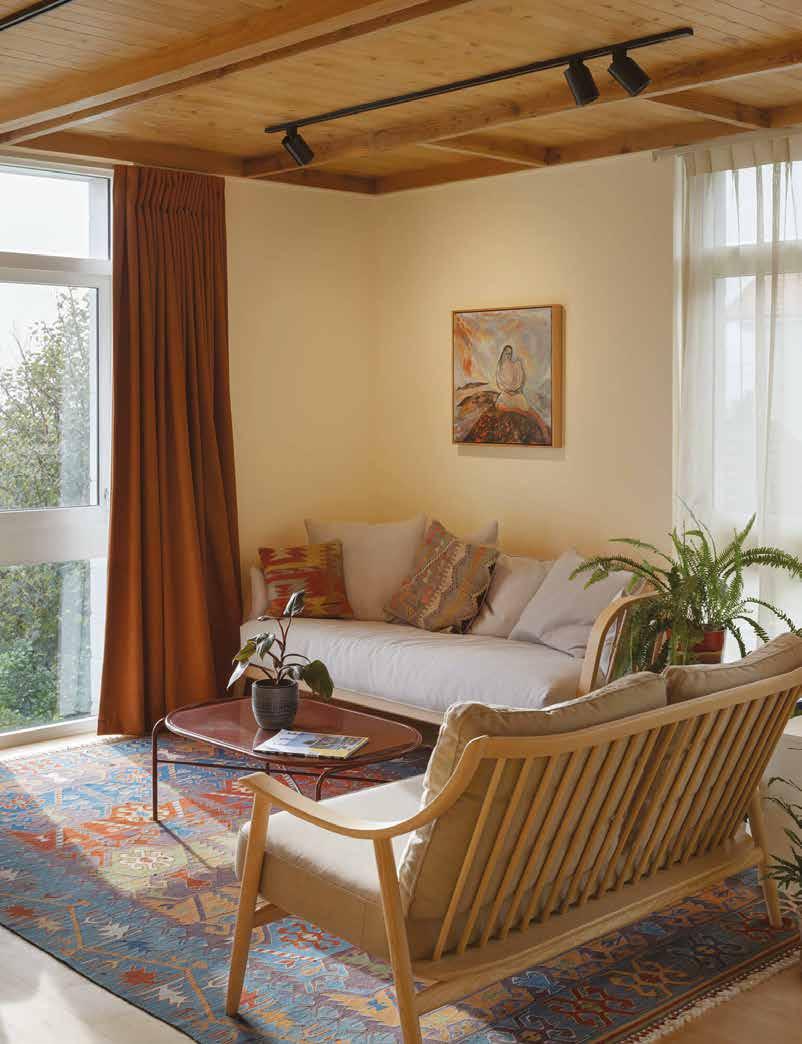
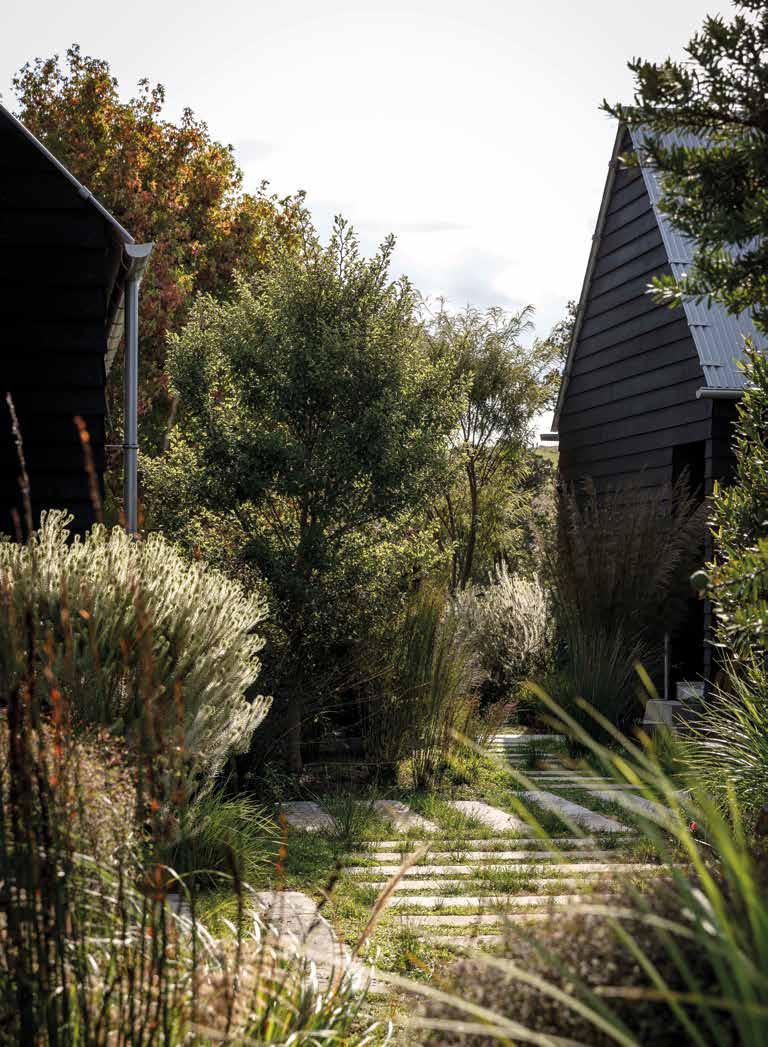
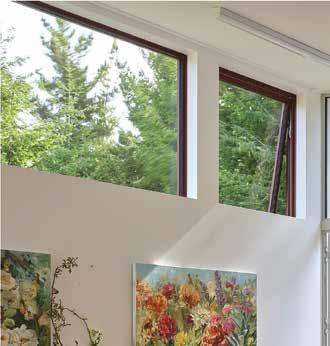

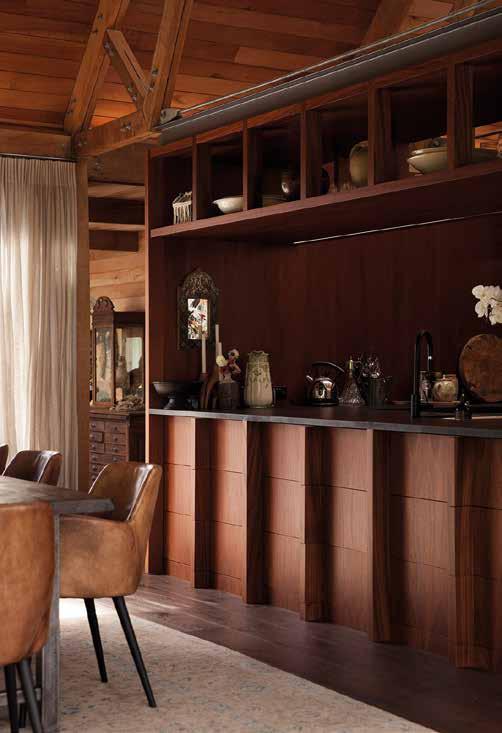
Pac Studio
Architecture
Pac Studio Architecture
Interior Design 09 973 5050 hello@ pacstudio.nz pacstudio.nz
Interior Design 09 973 5050 hello@pacstudio.nz pacstudio.nz

Open Day 21 March 2026





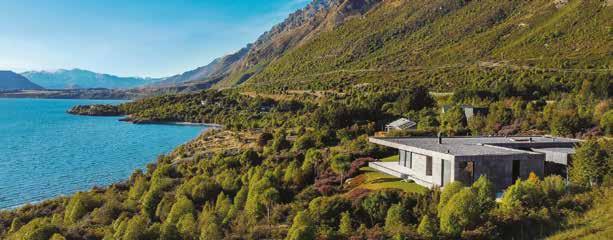
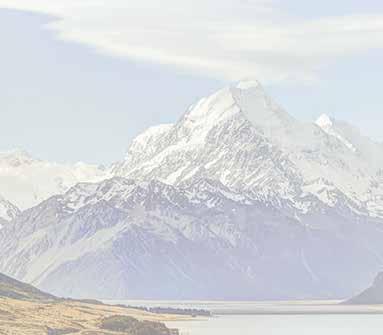
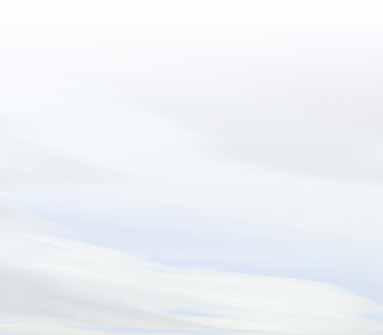




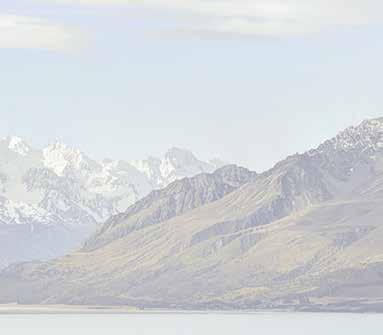



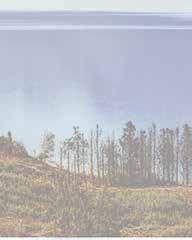



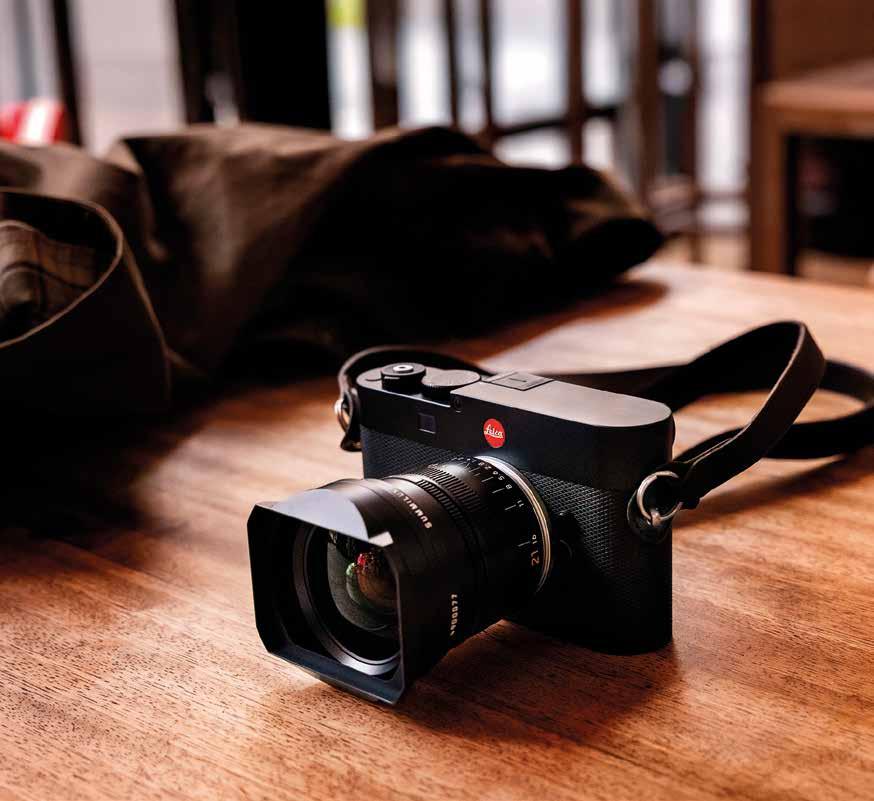
The Leica M has been the quiet companion of image makers who see the world differently. Now, the Leica M EV1 opens new creative horizons as the first Leica M with an integrated electronic viewfinder—bringing 60MP precision and real-time focus assist to the timeless rangefinder experience.


www.progear.co.nz | +9 529 5055
34 Ethel Street, Morningside, Auckland 1025

Leigh Melville leigh@artandobject.co.nz +64 21 406 678

Cover: Maddie Leach, video still from The Lilac Ship , 2002, single channel video, looped, collection of Te Papa Tongarewa Museum of New Zealand (2009-0005-3)

Available now, online or from a good bookshop near you Published by Te Herenga Waka University Press and Te Pātaka Toi Adam Art Gallery, November 2025
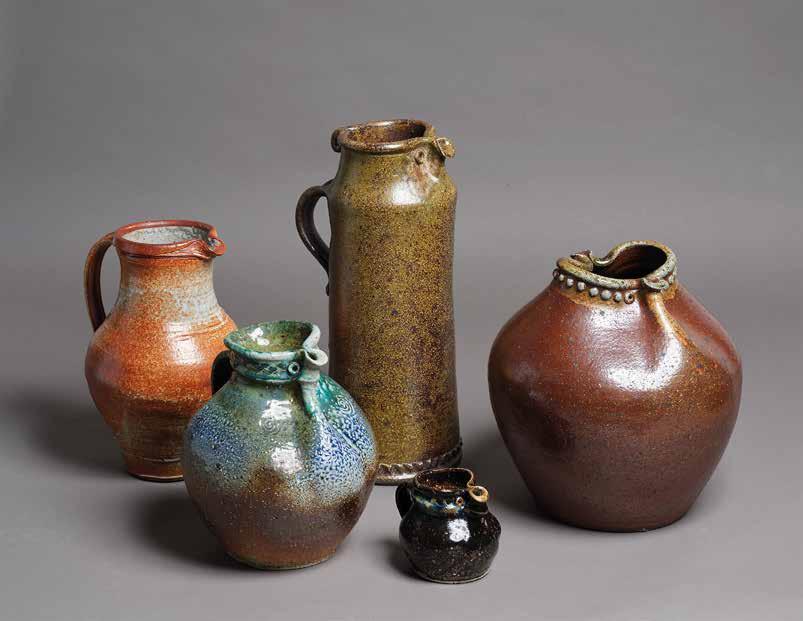
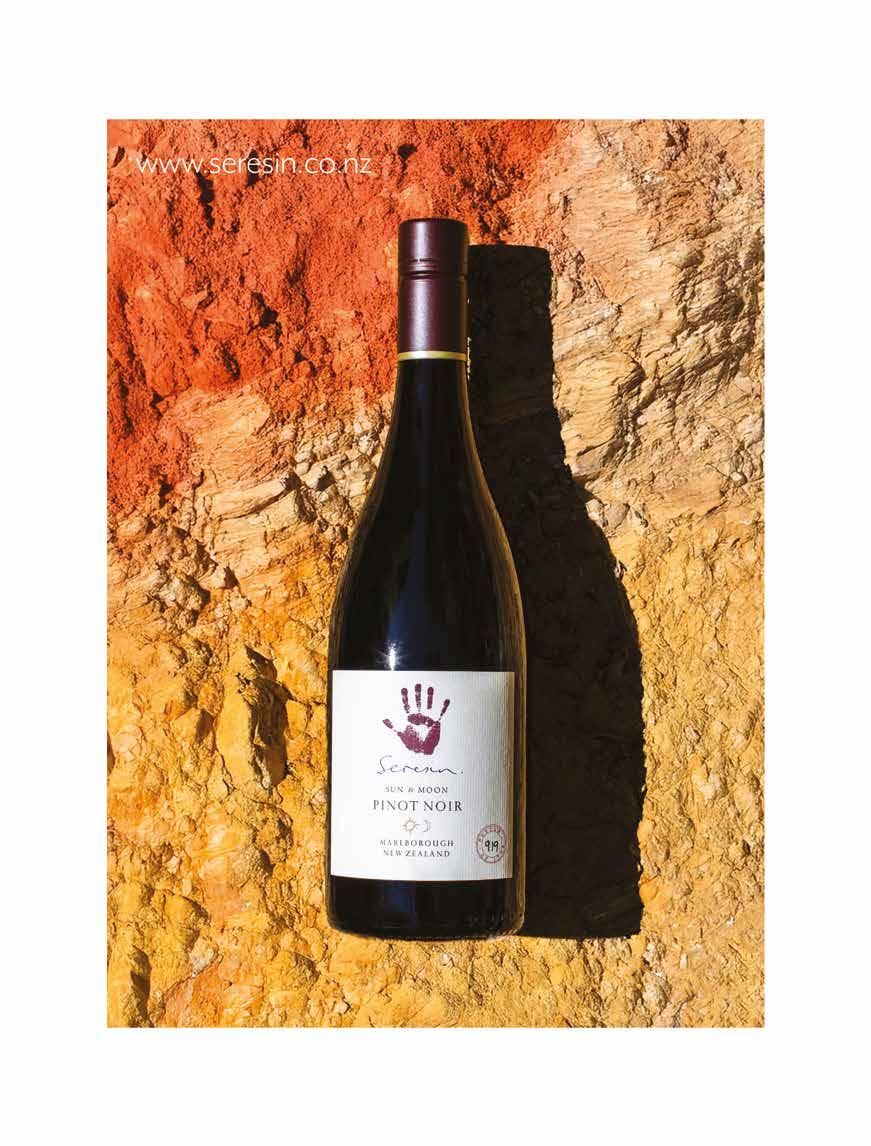
December 9, 2025 6:00pm
Of major importance is the Navigation Journal of John King Davis, Chief Officer of the ‘Nimrod' on the 1907–1909 British Antarctic Expedition under Shackleton. Also included are three original manuscripts of lyrics “Songs of the Morning” hand-written by Neville Pepper, Midshipman on the 'SY Morning’ on the British Antarctic Expedition [1903].
Other major items of importance are Private Press and artist's books from the collection of New Zealand Poet, Riemke Ensing. The collection includes ‘The Silences Between’. Janus Press, Vermont publication, edition of 120 copies, signed by Claire Van Vliet and inscribed by Keri Hulme; Walter Lawry Buller's ‘The History of the Birds of New Zealand’. London: John van Voorst 1873; George French Angas's, The New Zealanders (First 1847 edition); A superb set of ‘The Birds of Australia’ by Broinowski (1st edition in 6 volumes); Walter Raleigh, The History of the World (London 1652); ‘Bible. In Englyshe of the largest and greatest volume…’ At Rouen at the Coste and Charges of Richard Camarden (1566); Colin McCahon – 15 Drawings Dec ’51 to May ’52 (Hocken Library, 1967); A number of antiquarian & sporting books including : Pierce Egan – Boxiana: or Sketches of Ancient and Modern Pugilism (1812 and 1818).

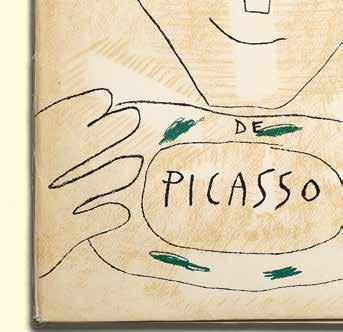

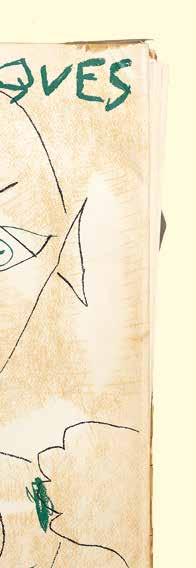
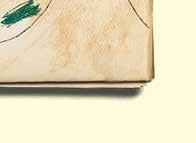
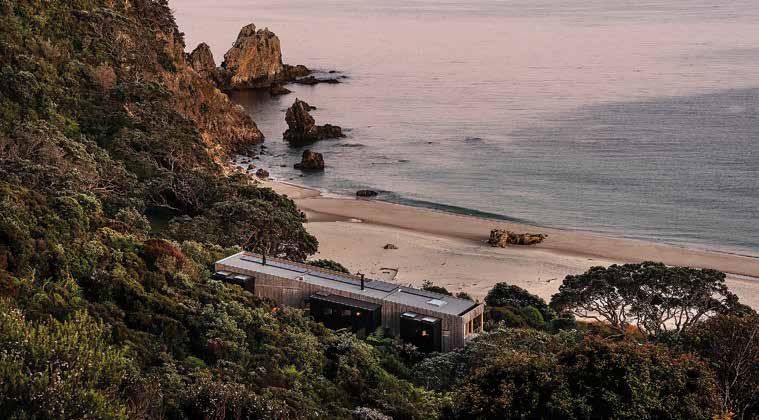
A rare opportunity to purchase a landmark piece of architecture. For sale by deadline treaty, closing 10 December 2025. For more information visit: waimataruru.co.nz
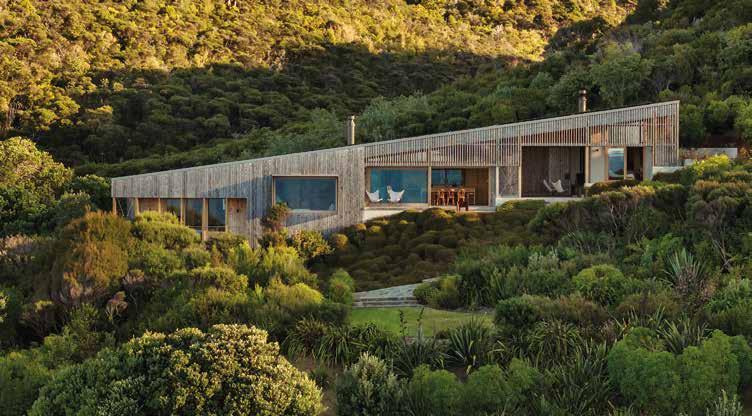
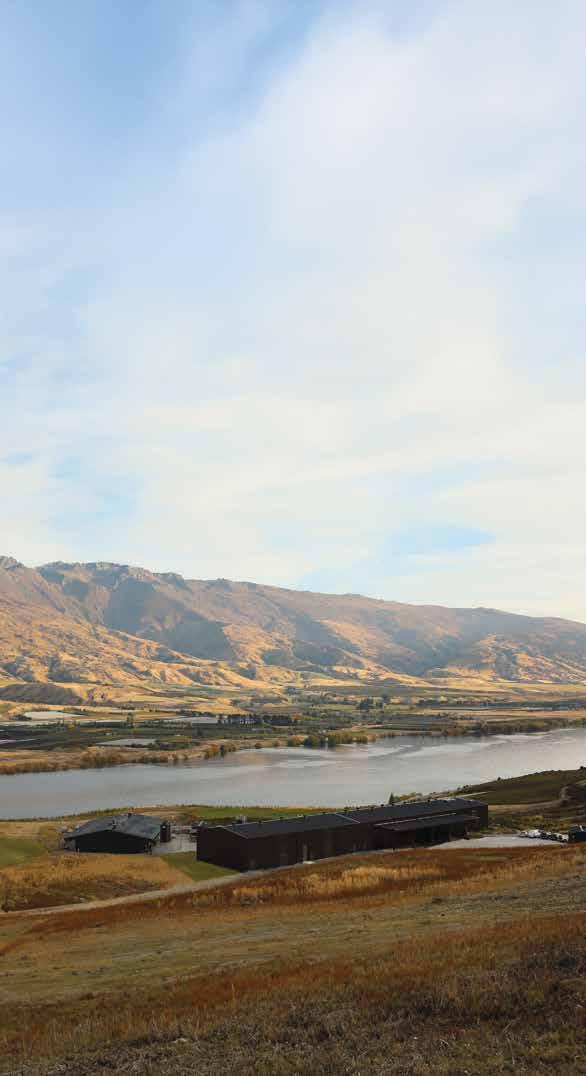

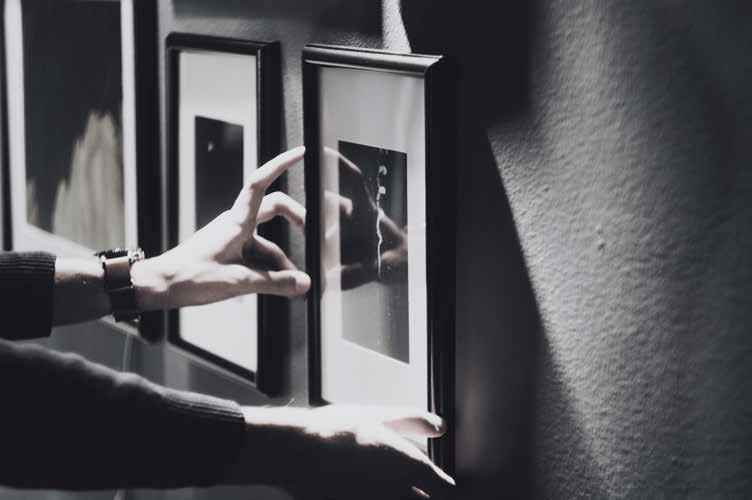
Artlink is New Zealand’s leading provider of specialised fine art services.
At Artlink, we provide a premium, end-to-end service for galleries, institutions, and private collectors who expect an exceptional standard of care. From secure, climate-controlled storage to specialist transport and installation, our expert team can handles every aspect of fine art management with precision and the utmost professionalism.
FIND OUT MORE
contact@artlink.co.nz
021 279 1106
www.artlink.co.nz

“a
22—23 October 2025
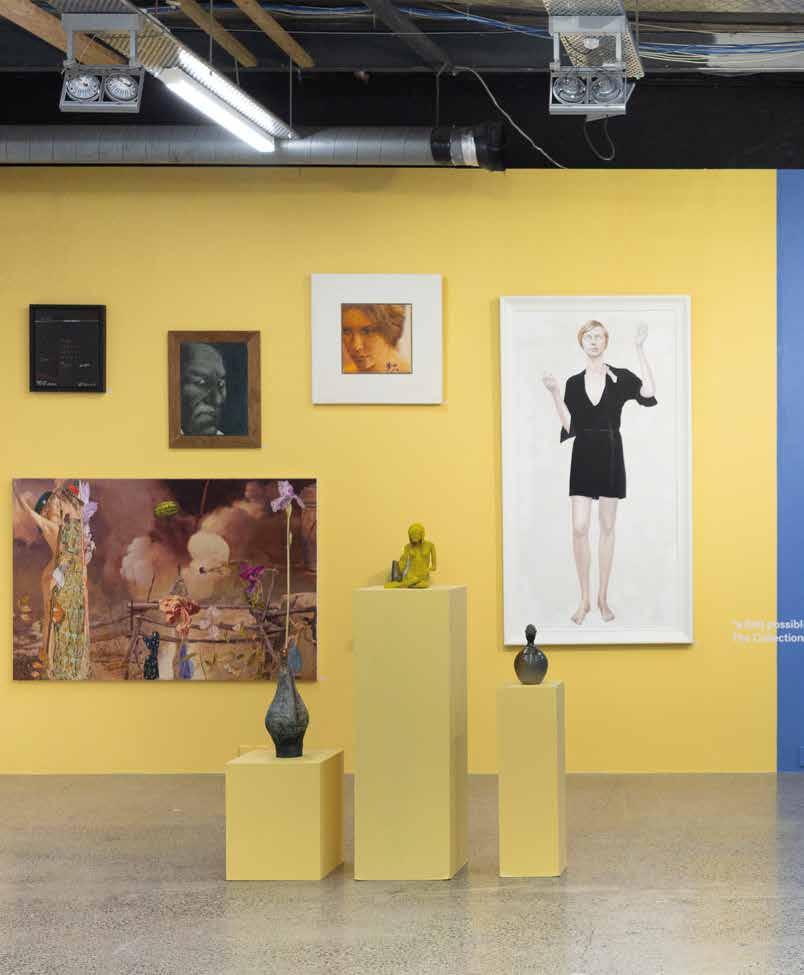
record prices at
achieved
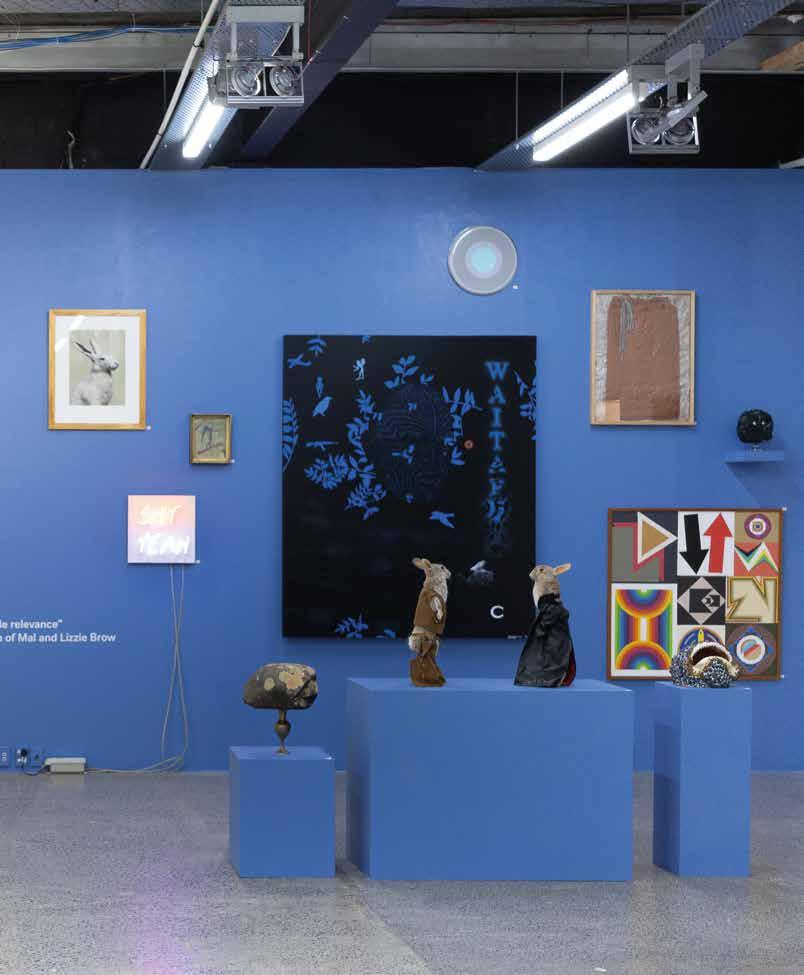
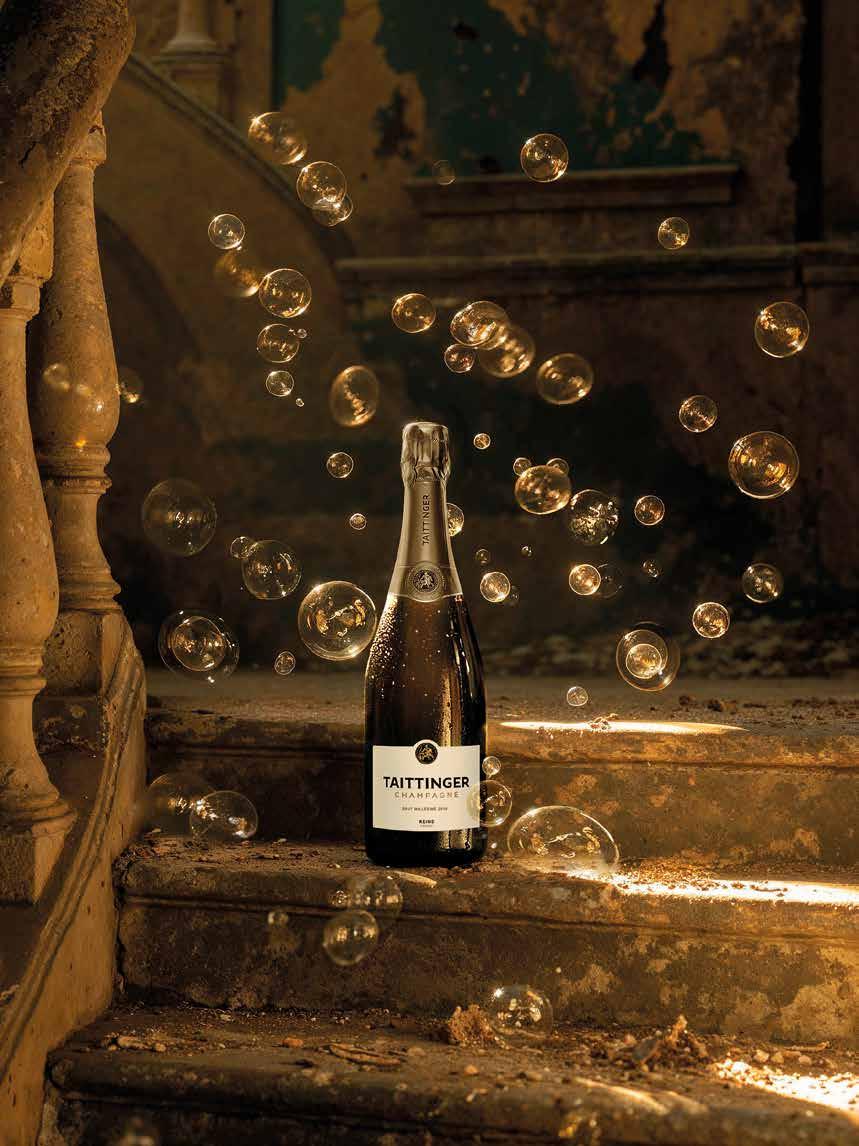
2025 has been a busy year at Art+Object, it began with The world is a strange place - the Grant Kerr Collection of Photography. As one of Aotearoa New Zealand’s preeminent photography collectors, it was a pleasure to work with Grant to market the sale. He began collecting photographs after meeting Peter Peryer in 1988 in New Plymouth, a meeting that spurred a friendship and the formation of a significant artist-patron relationship, lasting twenty years. We were particularly pleased to offer a screening of the Shirley Horrocks film Peter Peryer: The Art of Seeing during the viewing.
In June we offered The Collection of John and Sheana Gellert, with its strong focus on Auckland modernist painters and interesting sculpture, this sale attracted great interest and outstanding results for works by Michael Smither, Milan Mrkusich, Gordon Walters and others.
August saw our Important Paintings and Contemporary Art auction realise a total of over $5million, an outstanding result in a challenging market. The highest selling lot was the remarkable Before the Demolition by Rita Angus at over $600 000, while new record prices were achieved for the work of Ralph Hotere, Llew Summers and John Reynolds at auction. Included in the auction was the landmark sale of seven works sold in support of the Auckland Art Gallery Foundation which resulted in $1 003 890 being donated to their endowment fund.
Most recently we offered “a (im) possible relevance” : The Collection of Mal and Lizzie Brow, an auction which showcased the Brow family’s considerable commitment to the arts community and left many visitors to the rooms asking ‘how did they fit it all in?’. Excellent prices were achieved for the work of Andrew McLeod, Liz Maw, Peter Peryer, Kushana Bush, Michael Parekōwhai, Saskia Leek, Bill Culbert and Marti Friedlander, as well as Australian artists Diena Georgetti and Rose Nolan.
The relevance of this condensed market review is to highlight the continued strength of the auction market in a year that has felt challenging economically for many. We continue to work on our offering; strengthening our online presence and embracing the opportunities that technology continues to afford us. At the same time, we still love to host a live auction and we love to see you viewing and bidding in person whenever possible.
As always, we are extremely grateful to all our vendors and our buyers; you keep us engaged and contribute to what is still a vibrant sector for artists and collectors. We hope to bring you more interesting and exciting collecting opportunities in 2026. Before then, we do hope to see you in the rooms to view the present auction. We are proud to be offering exceptional works from the collection of artist Ann Robinson, an artist who has been pioneering in her field of glass casting for more than thirty years.
Season’s Greetings, Leigh Melville

Thursday 20 November, 5–7pm
3 Abbey Street, Newton, Auckland
Thursday 27 November at 6pm 3 Abbey Street, Newton, Auckland
Friday 21 November
Saturday 22 November
Sunday 23 November
Monday 24 November
Tuesday 25 November
Wednesday 26 November
Thursday 27 November 9am–5pm 10am–4pm 10am–4pm 9am–5pm 9am–5pm 9am–5pm 9am–2pm
1 Jude Rae SL 477
oil on linen title inscribed, signed and dated 2023 verso 410 x 410mm
Provenance
Private collection, Auckland. Purchased from Two Rooms, Auckland.
$16 000 – $25 000

Robin White Harbour Cone from Hooper’s Inlet
silkscreen print, 8/75
title inscribed and signed 465 x 475mm
Provenance
Private collection, Dunedin. Purchased from Marshall Seifert Gallery, Dunedin.
$6000 – $10 000
3
Robin White Harbour Cone
silkscreen print, 17/50
title inscribed, signed and dated Jan ’73
330 x 233mm
Provenance
Private collection, Wellington.
$5000 – $8000
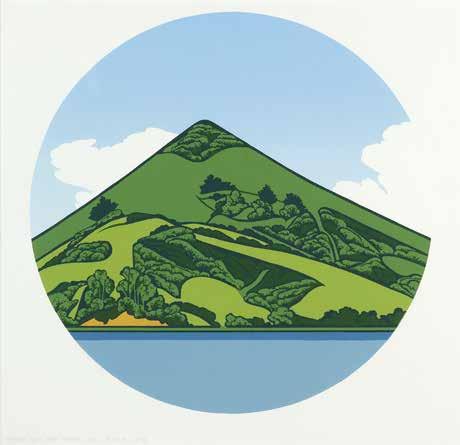

Ralph Hotere
Drawing for a Black Window
acrylic on recycled paper
title inscribed, signed and dated ’81
510 x 427mm
Provenance
Private collection, Auckland.
$20 000 – $30 000

Pat Hanly Torso C
acrylic and enamel on paper title inscribed, signed and dated ’77 365 x 390mm
Provenance
Private collection, Auckland.
$20 000 – $30 000

Gordon Walters Tamaki
silkscreen print, 6/50
title inscribed, signed and dated 1983 665 x 510mm
Provenance
Private collection, Auckland.
$18 000 – $26 000
7
Gordon Walters Karaka
silkscreen print, 37/50
title inscribed, signed and dated 1979 760 x 565mm
Provenance
Private collection, Wellington.
$15 000 – $20 000


Robin White
On the Beach, Otago Peninsula
silkscreen print, edition of 35 title inscribed, signed and dated Oct ’72
557 x 370mm
Provenance
Private collection, Auckland.
$5000 – $8000
9
Don Binney Manunui, Otakamiro
screenprint on Fabriano paper, 30/80 title inscribed, signed and dated 2010
510 x 367mm
Provenance
Private collection, Auckland.
$14 000 – $20 000

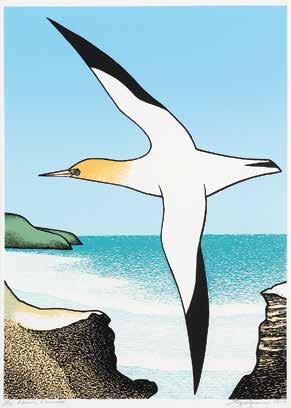
Paul
Dibble
Moving Forward
cast bronze, 3/3
signed
515 x 280 x 118mm
Provenance
Private collection, Auckland.
$16 000 – $25 000
11
Barry Lett
Vivian Dog
cast bronze, 1/15
signed
700 x 440 x 250mm
Provenance
Private collection, Auckland.
$10 000 – $16 000


Barry Brickell
Large Spiromorph
wood-fired terracotta
1600 x 700 x 500mm
Provenance
Private collection, Auckland. Purchased from Driving Creek, Coromandel, circa 1995.
$12 000 – $20 000

Kushana Bush
Babes and Fools from the series Nais tambu pepa piksas
gouache, pencil and gold leaf on paper title inscribed, signed and dated 2014 verso
560 x 660mm
Provenance
Private collection, Wellington.
$20 000 – $30 000
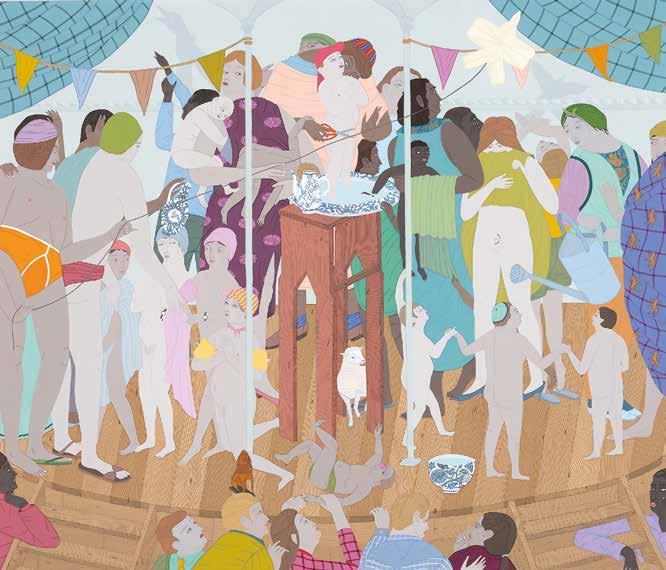
Nick Austin
Travelling Envelope No. 3
acrylic on newspaper title inscribed, signed and dated 2012 on original Hopkinson Mossman Gallery label affixed verso 570 x 780mm
Provenance
Private collection, Auckland. Purchased from Hopkinson Mossman Gallery, Auckland.
Exhibited
‘Nick Austin: Life Puzzle’, Whangarei Art Museum, Whangarei, April 9 –July 10 2022.
$2500 – $4000
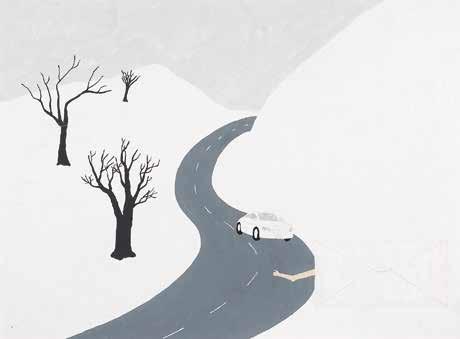
15
Nick Austin
Travelling Envelope No. 11
acrylic on newspaper title inscribed, signed and dated 2013 on original Hopkinson Mossman Gallery label affixed verso 570 x 780mm
Provenance
Private collection, Auckland. Purchased from Hopkinson Mossman Gallery, Auckland.
$2500 – $4000

Peter Siddell
Summer City
acrylic on board signed and dated 1974
600 x 700mm
Provenance
Private collection, Auckland.
$38 000 – $55 000

Euan MacLeod
Sea Saw
oil on canvas
title inscribed, signed and dated ’99 – ’01 verso
1500 x 1805mm
Provenance
Private collection, Canterbury.
$25 000 – $35 000


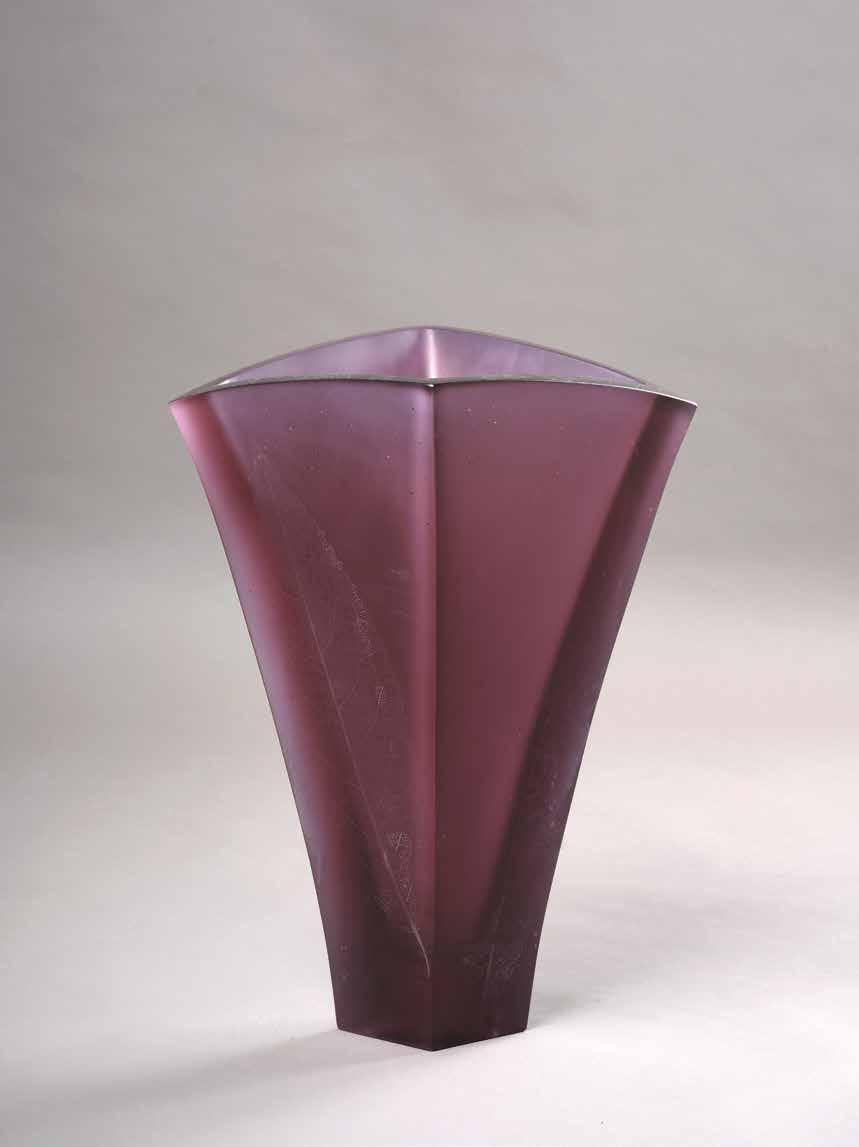
18
Ann Robinson
Curved Vase
cast glass
490 x 365 x 340mm
Provenance
Collection of Ann Robinson, Auckland.
$28 000 – $38 000
In her early 20s, Ann Robinson studied sculpture at Elam School of Fine Arts. There she was taught by Greer Twiss (1937–2025) who had been in Europe studying foundry techniques in Germany, Italy, France, Holland, and Britain courtesy of a QEII Arts Council grant. Ann, one of the daughters of popular mayor Sir Dove-Myer Robinson (1902–1989), learned ciré perdu or lost wax casting techniques at the bronze foundry at Elam where Twiss was appointed to the staff in 1966. In 1980, after 15 years away while she raised a family, Ann returned to Elam, when she heard that her former fellow student Mel Simpson had set up a glass programme there with a QEII grant in 1978. Simpson had studied in Illinois in 1974, then learnt glass blowing at the University of California in Los Angeles in 1975. Back at Elam to finish her Diploma of Fine Arts, Ann Robinson studied alongside Garry Nash and Peter Raos in the Elam glass studio, and subsequently worked at Sunbeam Glass Works, where she became in her own estimation, “not a bad glass blower” over the next nine years.
Using her knowledge of the lost wax method from making bronze sculpture, she developed a procedure for casting glass which involved making a wax model, then mixing up a silica-based substance to coat it, then firing to melt out the wax before pouring the hot glass into the negative mould left behind. Her initial experiments were trial and error, and she soon learned how important annealing was. This involved bringing down the temperature of the kiln over a period of days so that the glass cools from liquid at a steady and even rate without cracking. She always opened the kiln with bated breath to see if her pieces had survived the process. Her work was so unique and remarkable that she won three major awards, including the Philips Glass Award in 1984 and 1986, and the Winstone Biennale Award for Craft in 1987. By 1989 she was working out of her own glass casting studio in Glendene.
Her inspiration has always been nature, and her location in the Pacific. With these pieces, some of which reach back to the 1990s, there are experiments with direct casting from lacebark leaves (seen on the smoky-coloured vase), a centipede attached to the gold vase, and the purple one has a shape evocative of nikau fronds. The blue piece is reminiscent of a kava bowl. Her work has earned her an Order of New Zealand Merit and also a Arts Foundation Laureateship. She remains the most outstanding glass practitioner working in New Zealand today.
Linda Tyler

Ann Robinson
Landscape Bowl
cast glass/ 1/1
title inscribed, signed and dated 2009 and inscribed leaf images added 6. 2012
490 x 500 x 240mm
Provenance
Collection of Ann Robinson, Auckland.
$30 000 – $50 000
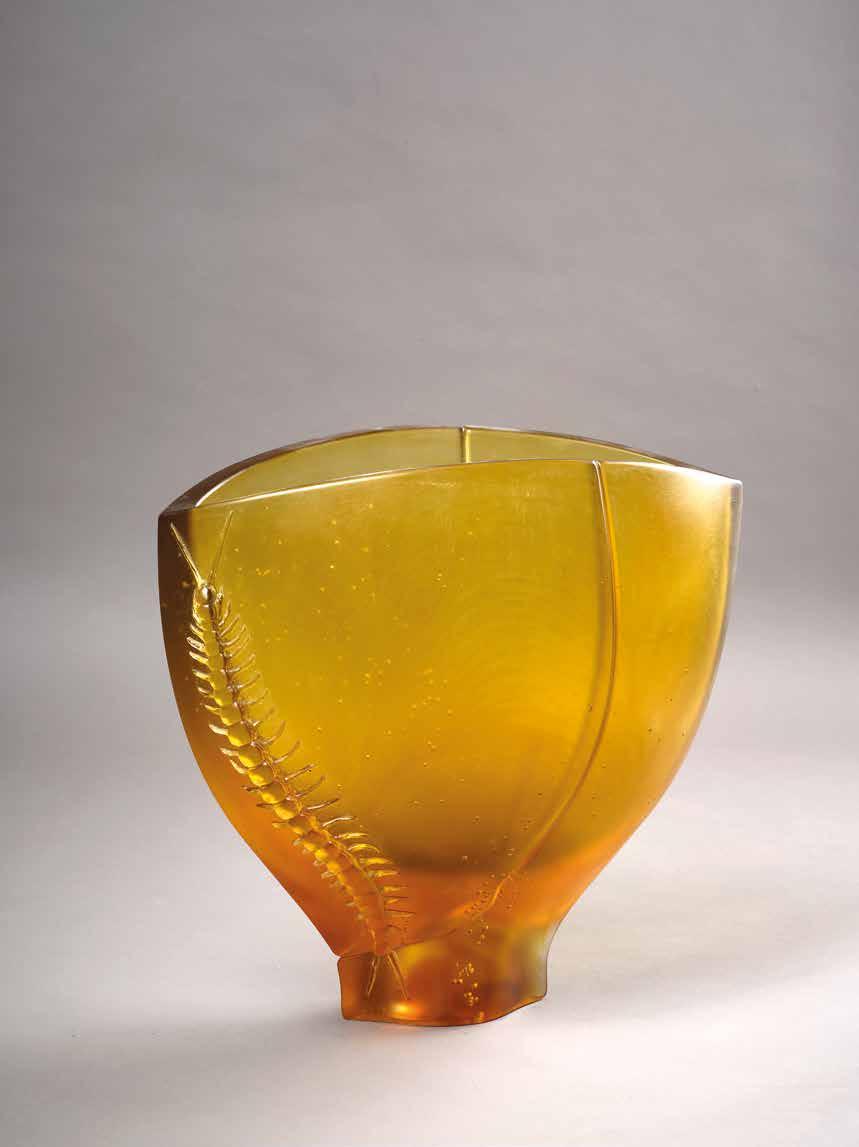
Ann Robinson
Landscape Bowl with Centipede cast glass
490 x 500 x 240mm
Provenance
Collection of Ann Robinson, Auckland.
$30 000 – $50 000
Ann Robinson
Pod
cast glass
signed and dated ’95 to underside
255 x 345 x 300mm
Provenance
Collection of Ann Robinson, Auckland.
$20 000 – $30 000

Ann Robinson Pedestal Bowl
cast glass
235 x 360 x 360mm
Provenance
Private collection, Auckland. Purchased from Masterworks, Auckland, 1987.
$10 000 – $18 000
Amsel Blew
cast aquamarine bullseye and clear glass, hand-smoothed and polished title inscribed, signed and dated 2011
390 x 505 x 60mm
Provenance
Private collection, Auckland.
$6000 – $10 000
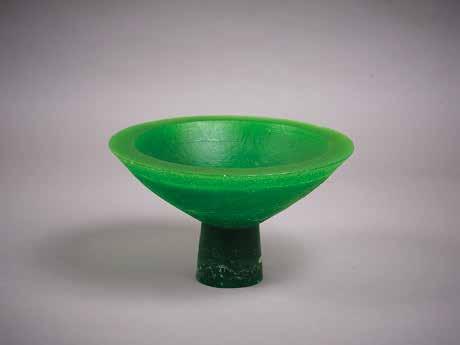
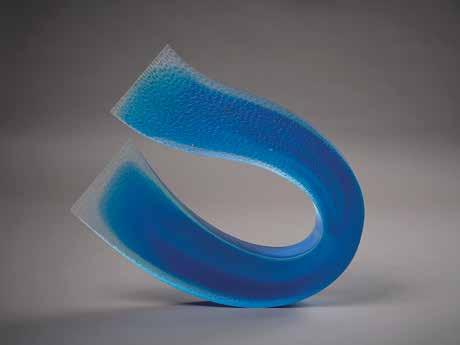
John Edgar Code
white Portuguese limestone and red Indian Sandstone
245 x 1030 x 70mm
Provenance
From the collection of the artist’s estate.
$5000 – $8000
25
John Edgar Too Much Sea Between Us
red and black granite signed with artist’s monogram
180 x 800 x 60mm
Provenance
From the collection of the artist’s estate.
$5000 – $8000

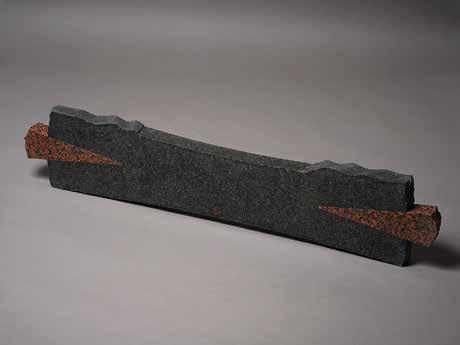
Callum Innes (Scotland, 1962– )
Exposed Painting: Red, Violet oil on Belgian linen title inscribed, signed and dated ’03 1050 x 1050mm
Provenance
Private collection, Auckland. Purchased from Jensen Gallery, Auckland, 2005. $30 000 – $45 000
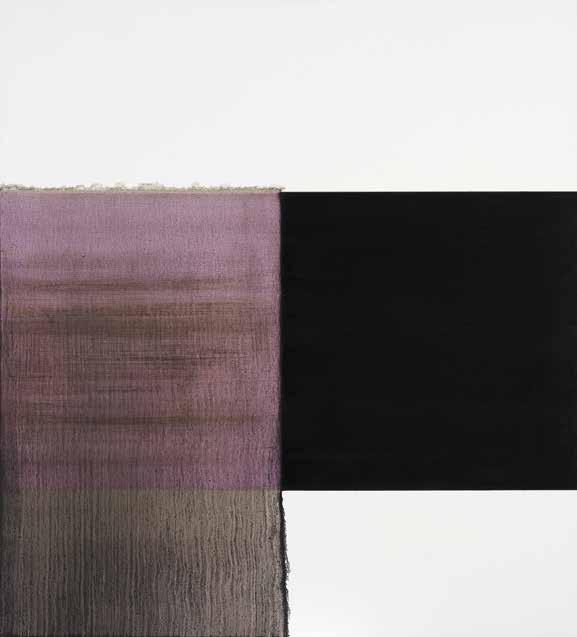
Stephen Bambury
Sister
resin and graphite on seven aluminium panels title inscribed, signed and dated 2001 verso 2765 x 500mm
Provenance
Private collection, Auckland.
$35 000 – $45 000

Allen Maddox
Untitled
acrylic and oil on canvas signed with artist’s initials A.M and dated ’96 verso 1010 x 1010mm
Provenance
Private collection, Auckland. Purchased from the artist in Napier, circa 1997.
$28 000 – $40 000

Shane Cotton Shields
title inscribed, signed and dated ’89-’90 verso oil on canvas
2000 x 1510mm
Provenance
Private collection, Wellington. Purchased from Gow Langsford Gallery, Wellington, 1991.
$30 000 – $50 000

Karl Maughan Kiwitea
oil on canvas title inscribed, signed and dated September 2005 verso 1525 x 1525mm
Provenance
Private collection, Waikato. Passed by descent to the current owner.
$35 000 – $50 000
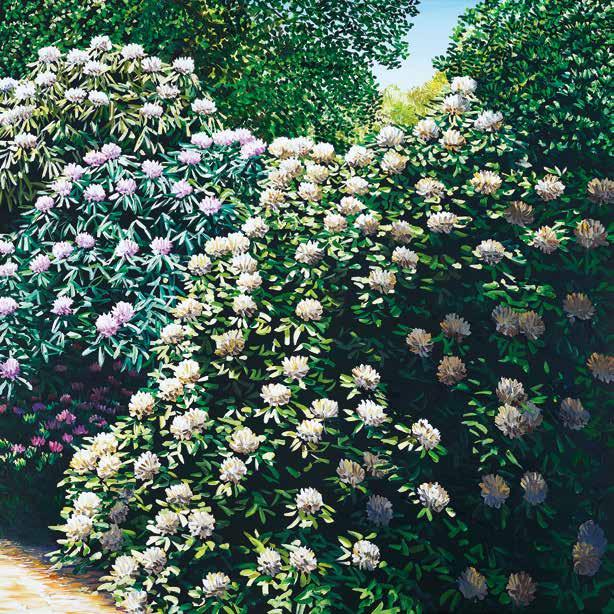
Karl Maughan Manui
oil on canvas title inscribed, signed and dated 2020 verso 1500 x 1500mm
Provenance
Private collection, Auckland.
$35 000 – $50 000
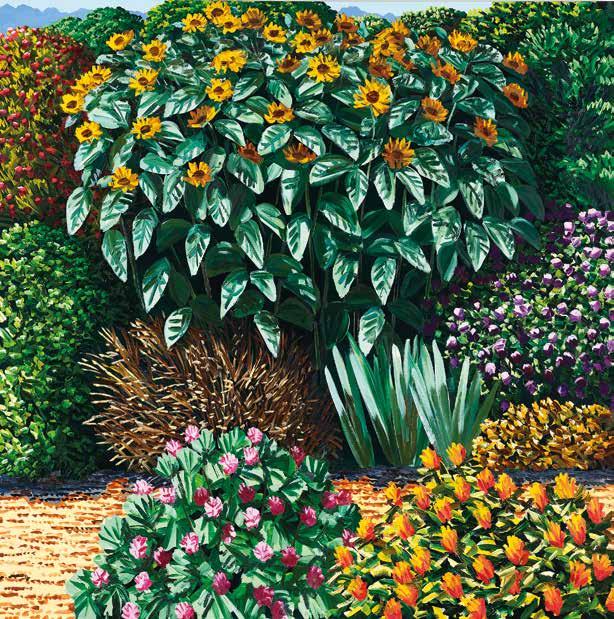
Michael Parekōwhai
Rainbow Servant Dreaming
automotive paint on fibreglass
420 x 180 x 100mm
Provenance
Private collection, Auckland.
$25 000 – $40 000
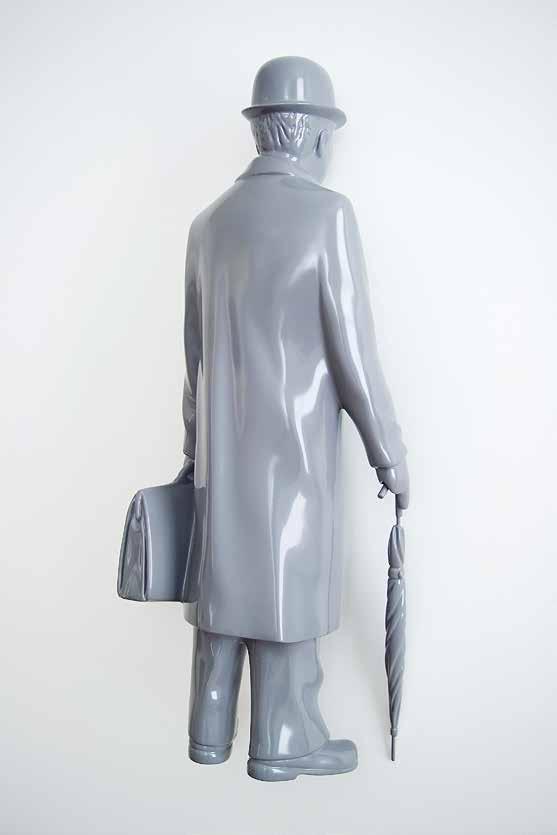
Peter Stichbury
Glen Brimer, NDE, 1971
acrylic on canvas title inscribed, signed and dated 2019 verso 600 x 500mm
Provenance
Private collection, Auckland.
$50 000 – $75 000
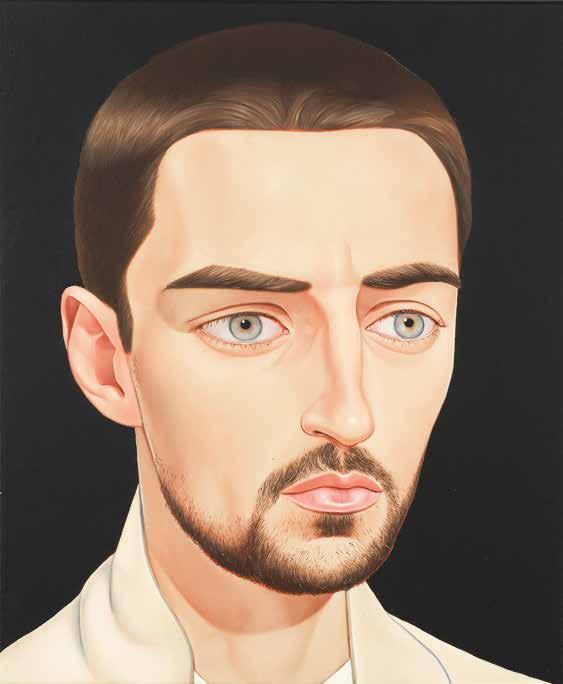
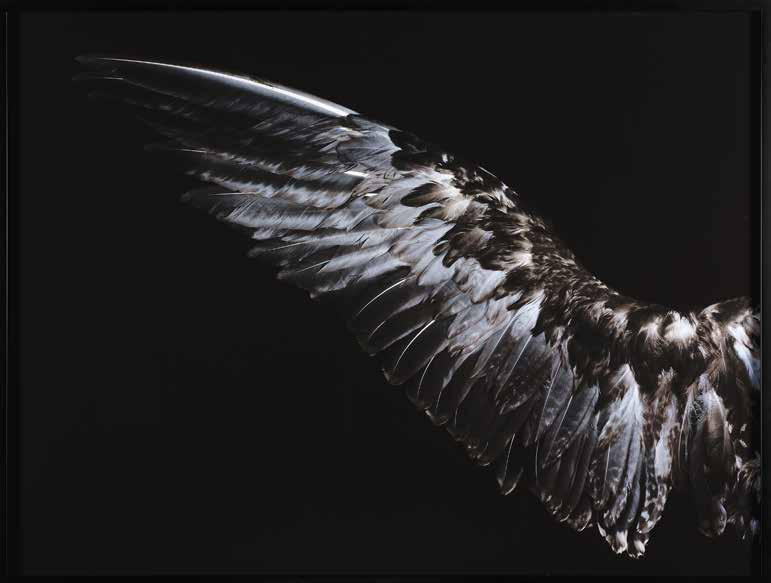
34 Fiona Pardington
Silver Winged Gull (below), Hunter pigment inks on Hahnemuhle paper, A/P title inscribed, signed and dated 2022 verso 955 x 1280mm: each panel
Provenance
Private collection, Auckland.
$40 000 – $60 000
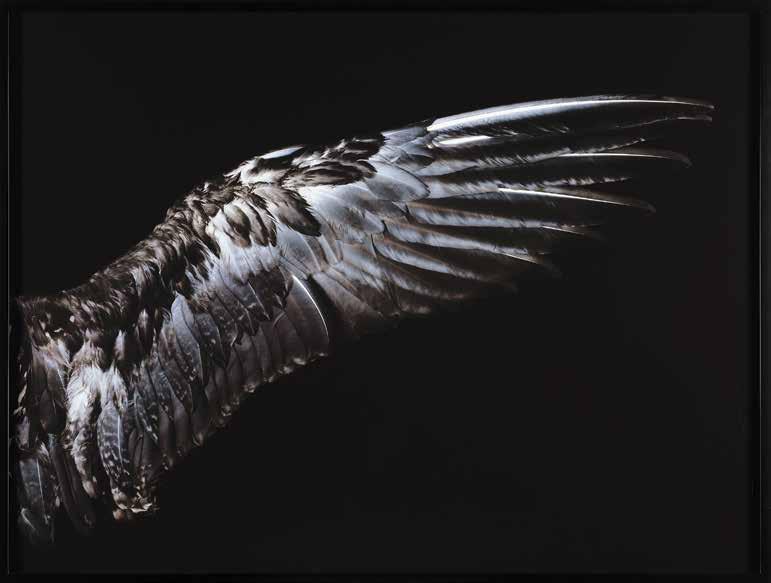
35 Ralph Hotere
Black Painting (Indigo)
brolite lacquer on board
title inscribed, signed and dated ’67 – ’68 verso
610 x 610mm
Provenance
Private collection, Auckland.
$30 000 – $40 000

Ralph Hotere
Black Painting (Red)
brolite lacquer on board title inscribed, signed and dated ’67 – ’68 verso 610 x 610mm
Provenance
Private collection, Auckland.
$30 000 – $40 000
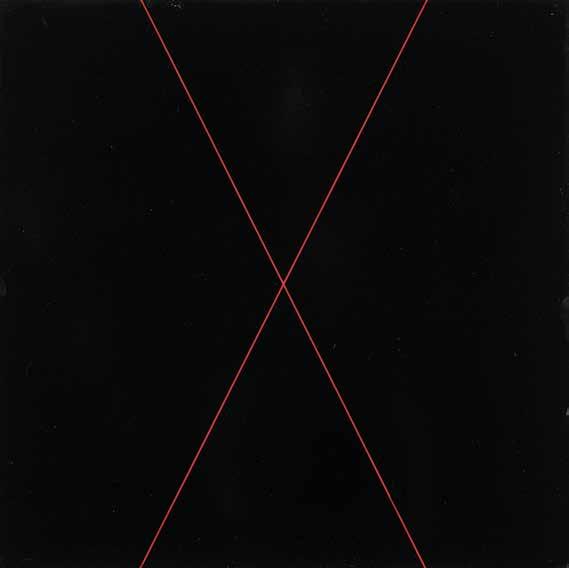
Charles Frederick Goldie
Harata Rewiri Tarapata
conté crayon on paper signed and inscribed Haere Ra! Kia ora, Tōu hoa
175 x 135mm
Provenance
From the estate of David Collinson.
Private collection, Auckland.
$80 000 – $120 000
At the suggestion of Governor George Grey, Goldie left Auckland at the age of 22 in 1893 to study art at the Academie Julian, a Parisian private art school operated by the French painter Rodolphe Julian (1839–1907). There he was taught by William-Adolphe Bouguereau (1825–1905), an academic painter famed for his mythological and genre paintings abundantly garnished with renditions of the female form. Goldie studied there for four and a half years, winning a gold medal for his painting from the life model. He had already shown interest in Māori portraiture before leaving New Zealand, exhibiting his first recorded painting of a Māori subject at the Auckland Academy of Art in 1892. Depictions of tangata whenua would become Goldie’s mainstay as an exhibiting artist from his return in January 1898, when he set up the “French Academy of Art” with his former teacher Louis John Steele (1843–1917) in Victoria Arcade in Shortland Street where they trained art students.
Conté crayons are named after the painter and physician Nicolas-Jacques Conté (1755–1805) who invented them by mixing graphite and clay to achieve different degrees of hardness. They were imported and advertised for sale in Auckland from 1863 by the Scottish bookseller and stationer George Thomson Chapman (1824–1881). Unlike a pastel which is soft, conté is wellsuited to drawing the figure or face, where careful delineation of features is required. Using this medium enabled Goldie to capture Harata Tarapata’s slightly amused expression, looking directly at the viewer with recognition in her eyes. Goldie signs the portrait “tōu hoa” (your friend) suggesting a close relationship between them, and this may have been made as a gift for her. While the velvet blouse and silk scarf of the sitter are indicated in a cursory way, the texture of her skin and hair are carefully rendered in light and shade. The focal point is her eyes, not her moko kauae, which – though distinct – is partly in shadow. Dense vertical directional lines shade the background, while more diagonal ones define the right shoulder of the subject, which is set at a dynamic angle to the picture plane.
Harata (Charlotte) Rewiri Tarapata (1831–1913), Ngāpuhi, daughter of Te Wharerahi of the Hokianga, and related to two signatories to Te Tiriti, Tāmati Waaka Nene and Eru Patuone, was the second wife of Paora Tūhaere, of Ngāti Whātua, Ōrākei (an Anglican lay preacher) and mother of their only child Mere Kaihau. Said to have delivered ammunition to Ngāpuhi warriors at Ruapekapeka (1845–46) when she would have been just 15 years old, Harata was acknowledged as a great beauty, and with her cousin Ina Te Papatahi (Te Ngahengahe, Ngāpuhi) was a frequent subject for Goldie. After the deaths of their husbands, these two women lived in the Waipapa Māori hostel in Mechanic’s Bay, Auckland, not far from Charles Goldie’s Hobson Street studio, and Harata Tarapata was the sitter for the large oil painting The Widow (1903) (Museum of New Zealand, Te Papa Tongarewa). There is also an oil portrait from 1903 in the Whangarei Art Museum wearing a green velvet top and pink scarf, and an oval depiction of her wearing a hei tiki and korowai in the Auckland Art Gallery from 1906. Another portrait of her, titled Suspicion, was exhibited at the Auckland Society of Arts in 1906, and it is likely that this conté drawing of her would have been made in the same year, when she was 75 years old, and just seven years before her death.
Linda Tyler

Paul Dibble
The Voyager
cast bronze, 1/5
2820 x 1000 x 640mm
Exhibited
‘Where the Owl sits on the Water’, Gow Langsford Gallery, Auckland, 2002. Provenance
Private collection, Auckland. Purchased from Gow Langsford Gallery, Auckland in 2002.
$160 000 – $240 000
Born at Waitakaruru on the Hauraki Plains, Paul Dibble studied at Elam School of Fine Arts from 1963 until 1967, graduating with a BA (Hons) in Sculpture. After working with Colin McCahon on religious art destined for post-Vatican II Catholic churches in Auckland designed by architect James Hackshaw, Dibble had his first solo exhibition at Barry Lett Gallery in 1971. His work as an art teacher took him to Palmerston North where he set up a home workshop in 1990, teaching himself how to use Tungsten Inert Gas (TIG) for arc welding to create precise and clean joins for his bronze forms.
He remained in the Manawatu after he gave up teaching to concentrate on his sculpture, finding the regional lifestyle conducive to his conceptual development. With his co-worker and partner Fran Dibble, he has travelled extensively to hone outstanding workshop techniques using lost wax, ceramic shell and sand-casting methods for bronze. They have perfected a technique where liquid plaster is poured into a double-sided canvas that has been sewn into the shape of a sculptural form which can have modelling wax applied once it has set. This enables Dibble to create his characteristically flattened three-dimensional figures such as Voyager seen here. The original maquette (titled Voyager Model Study 2 2001) shows much more solidly rounded forms, and two biplanes balancing on their wing tips, flanking the sail of the Polynesian canoe, the hull of which is supported by V shape formed by the cylindrical legs of this figure.
This work followed on from a commission by architects Craig Moller for The Point Apartments in Auckland’s Viaduct for three figurative sculptures to embody the names given to each block – Pacific, Shearwater and Voyager. Balancing on his elbows, this figure props up dividers at the work’s base, pointing to a type of mathematical compass that was used to measure distances on a nautical chart in European navigation. This contrasts with Polynesian navigators who used their knowledge of stars, currents and the migratory patterns of birds to steer their craft. The calipers form a spindly inverted V shape as counterpoint to the robust upright V of legs holding up the boat.
Linda Tyler
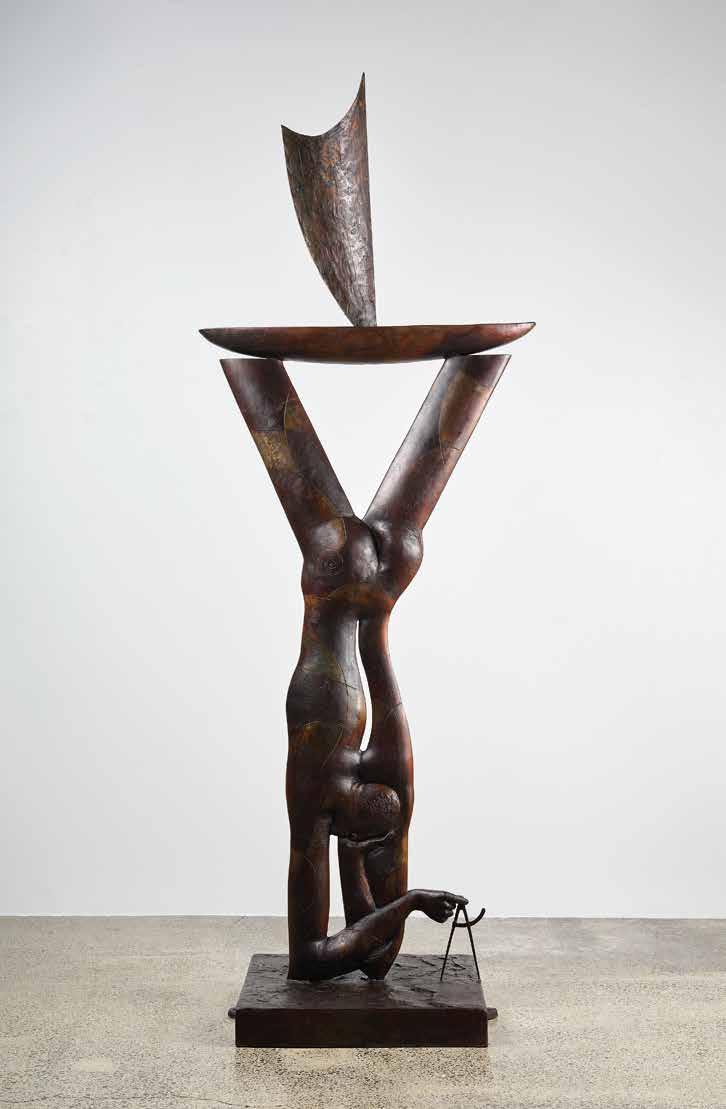
Ralph Hotere
Pipiwharauroa
brolite lacquer and acrylic on board
inscribed Kotahi Manu
I Tau Ki Te Tahuna, Tau Atu, Tau Atu, Kua Tau Mai; signed and dated ’77 and inscribed Pipiwharauroa, Pipiwharauroa, He Manu Rere, Rere Runga, Tere Raro verso
790 x 585mm
Provenance
Private collection, Auckland.
$90 000 – $140 000
The motif of the circle kept surfacing in Hotere’s work. Perhaps because Hotere’s name contains one. He will have known the apocryphal story from Renaissance art historian Giorgio Vasari of the young painter Giotto. The Pope sent an ambassador into Tuscany to find the best available artist to work in the Vatican. After collecting examples of the work of painters in Siena, he came to Florence and Giotto’s workshop. When he asked Giotto for a sample of his art to be sent to the Pope, Giotto took a piece of paper and a brush and, holding his arm firmly against his side in order to make a compass, proceeded to make a perfect circle in red paint. The courtier, disappointed, left convinced he had been duped but when the Pope saw Giotto’s drawing, and was told that it had been made without the aid of a compass, he appreciated the excellence of what Giotto had painted and hired him. There is something about the circle and the circular that is so emblematic of painting that the quest for the perfect circle has haunted art history from its beginning. The circle is infinity or zero; the seeing eye; the sun or moon; or the planet earth, our blue marble in space; it is the Eucharist or Host in the Catholic tradition; or simply ‘O’ as in an exclamation. For physicists a circle is formed when a system finds an equilibrium at a minimum energy level. Using a similar argument, Gestalt perceptual psychologist Rudolf Arnheim (The Power of the Centre, 1982) has written of how the spatial organisation of all artworks is made up of two dynamics (in the sense of attraction or repulsion), which he calls centricity and eccentricity. Ralph Hotere’s shiny, thin, perfect, white circle in Pipiwharauroa (1977) — painted with a form of compass we need to admit — is in equilibrium, it both centres and is eccentric. It pulls the eye in, keeping its mystery, its strange vitality. It is a shape unafraid of its own perfection.
‘Kotāhi manu tau ki te tahuna/Tau atu, tau atu, kua tau mai’ (One bird has landed on the sandbank/It has come to land, it has come to land, it has landed). This text on the lower front of the painting is drawn from an ancient Te Aupōuri chant, which may have originated with Taumatihina, a forebear of Hotere’s iwi, and was taught to Hotere by his father. It celebrates the annual arrival in spring of the kūaka (the bar-tailed godwit) following its 12,000 kilometre migration from Alaska. Could the brown dappling of the painting’s ground be that of a wet but exposed sandbank on which the kūaka alights? The centre of the circle combines a sense of transcendence with something earthy, like pure pigment. The phrase on the painting’s verso: ‘Pipiwharauroa he manu rere rere runga tere raro’ (‘The pīpīwharauroa is a bird that flies high and fast above and below [the sea and sky]’) refers to the annual migration of the smaller and cryptic-coloured shining cuckoo from the Solomon Islands back to Aotearoa every spring. Why has Hotere mixed (even confused) accounts of these two birds? In the drawings and paintings titled Pipiwharauroa, of which there are several, Hotere is testing different ideas for his eventual 18-metre-long mural commissioned for Auckland International Airport. Indeed, he titled some of these works ‘Test Pieces’ as if he were appraising which migratory bird to choose as the central concept for his commission. The pictorial possibilities of the kūaka chant and perhaps the bird’s more impressive migratory pattern meant it was the eventual winner for an artwork that would greet international air travellers. The pīpīwharauroa and text appear in several of Hotere’s Test Pieces and it seems he was initially appraising the bird, which migrates to warmer islands during New Zealand winters, as the central concept for his airport commission. Hotere would have known, of course, that like all cuckoos, the pīpīwharauroa gets other birds to hatch and raise their young. By laying their eggs in nests of riroriro (grey warblers), the shining cuckoo is absolved of parental care while the hapless warbler fosters the young pīpīwharauroa for several weeks until it can look after itself. Has Hotere deliberately slipped the pīpīwharauroa’s egg into the kūaka’s nest? Hotere’s work, like Giotto’s circle, is abstract but the word ‘abstract’ seems to miss the sheer force and single-mindedness of the story to be told and the artistic sublimity to be displayed. “See whether it is understood or not,” was the message Giotto sent to Rome with his painted circle, and there it was regarded “so perfect it was considered a miracle.” Hotere’s challenge to us is to ‘understand’ like this.
Laurence Simmons
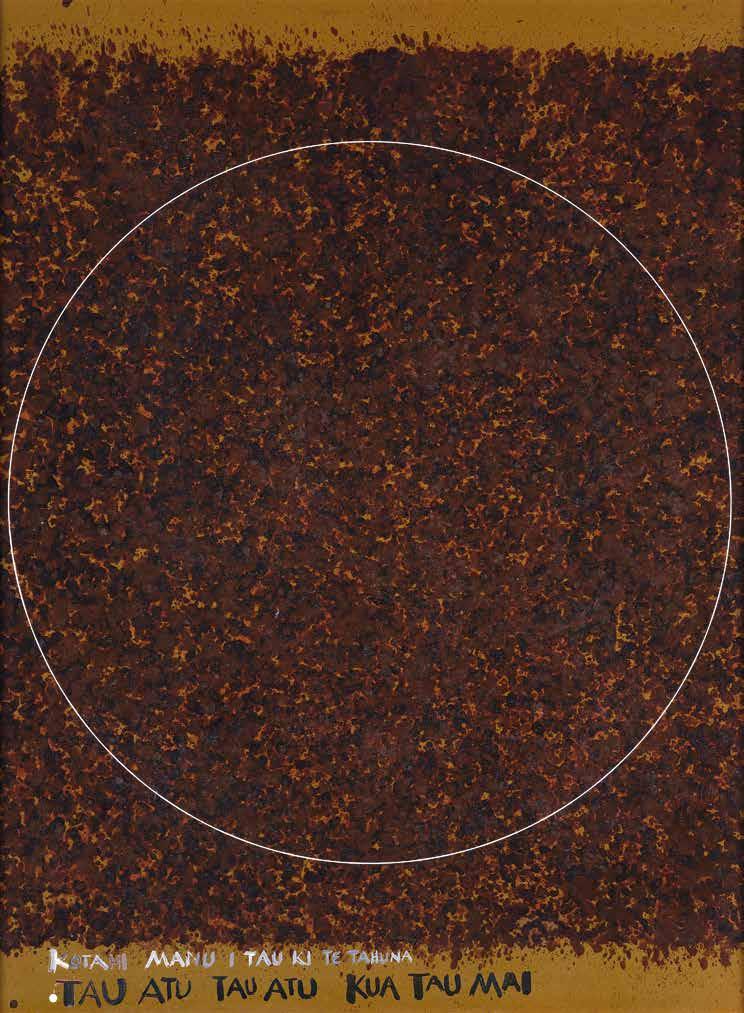
Tony Fomison
Christ
oil on canvas laid onto board in artist’s original shaped frame title inscribed, signed and dated 1975
485 x 455mm
Reference
Ian Wedde (ed), Fomison: What shall we tell them? (City Gallery, Wellington, 1994), Supplementary Catalogue No. 68.
$130 000 – $180 000
Tony Fomison painted quite a few images of Christ. I was going to say dozens but that might be an exaggeration. They range from copies of old masters, like his Head of Christ, After Morales (1968), to paintings as anomalous and unusual as this one is. By anomalous I mean that it lacks any of the iconography usually associated with Christ and, furthermore, would not be recognisable as an image of him if the title didn’t tell us so. The work was painted in 1975 and was followed, soon after, by a related and only slightly less enigmatic work called My Own Personal Christ (19756), in which the figure holds in one hand, near the bottom of the image, Fomison’s own monogram. That work, now in the Auckland Art Gallery, may be the last Christ he painted; it certainly throws some light upon this, the putative penultimate one.
The painting shows only the face, in what cinematographers call ECU: Extra Close Up. Under the arch of the support you can see a hint of long black hair falling; otherwise the greyish forehead, cheeks, eyes, nose and mouth are all that we have. The eyes look sideways, as if regarding something or someone askance. I want to say Judas, or any other betrayer, but there is no warrant for that. The nose is long and widened towards the tip while the lips, insofar as we can tell, are down-turned, emphasising the doubt, uncertainty or suspicion in Christ’s expression. My Own Personal Christ has the same sideways look, the same down-turned mouth and, to my mind anyway, is recognisably the same person. However, the personal Christ is painted head and shoulders, with his right hand across his torso, holding the monogram, and there is a great deal of pride as well as scepticism in his stance and his expression.
The other characteristic of both of these Christs is that they are, without doubt but without direct confirmation either, Polynesian; reminding us perhaps of James K Baxter’s poem ‘The Māori Jesus’ (1966), which opens with Baxter’s Christ walking across the waters of Wellington Harbour. Later he is imprisoned, then lobotomized but Fomison’s looks too wary, too knowing and too powerful to accept that kind of fate. He is no ‘gentle Jesus meek and mild’, suffering little children to come to him. Rather, he resembles the doomed prophet in the Gospel of Matthew, on his way to Calvary, who cursed a fig tree for not bearing fruit and then struck it dead. He may well also be one of the deities who gave Tony strength and guidance as he embarked, as he was about to do, upon the inscription of the ’pea, traditional Samoan tattoo, on his skin. And, if this is tenable, you’d have to add that Christ would not be the only god at his side during that ordeal.
Fomison’s oeuvre is haunted by ghosts, mutants, prophets, revenants, spirits, warriors, and other beings difficult to name or even categorize. It seems to me unlikely that, in this unruly cavalcade, Jesus holds the primary position. If Fomison claimed a personal Christ, and that Christ was Polynesian, he would not be a redeemer of sinners so much as an advocate for the poor, the dispossessed, the hungry — including those deprived of their culture, their land and their religion by the coming of Christianity. This is a paradox of course but the Christ of the New Testament is paradoxical, and spoke often in parables. Fomison’s Christ, then, might be seen as another parable, one we need to meditate upon, even if we will not thereby achieve enlightenment: we might however find understanding.
Martin Edmond
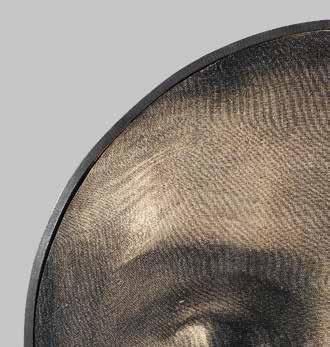



Philip Clairmont
Portrait of Viki
oil on board
title inscribed, signed with artist’s initials CT and dated ‘69 1175 x 780mm
$120 000 – $180 000
Philip Clairmont married Viki Hansen, the subject of this portrait, the same year it was painted. The ceremony, on March 22 1969, was filmed and a sequence shown on Christchurch television as an example of a hippie wedding. One of the guests, Clairmont’s friend Tony Fomison, came wheeling a pram in which there was a human skull. I imagine the reception afterwards would have been equally memorable. Viki was a fellow student of Phil’s at Ilam Art School; she had fallen pregnant over the preceding summer, which they’d spent at her parents’ bach at Waikanae; daughter Melissa was born the following October. The Hansen family were part of the Scandinavian community in the Horowhenua, once investigated by historian Bill Oliver. Curiously enough, Phil’s mother, Thelma, whose maiden name was Nelson (probably originally Neilson), had roots in the same community. It is unclear, however, if the young couple were aware of this.
Viki was a red-head, as the portrait shows, and had the proverbial hot temper of those with that description. She was direct, formidable, and not one to suffer fools gladly or in any other way. You can see her power and vitality in the version Clairmont made of her: this is not a picture painted to idealize or flatter his new wife. Not, I think, because he didn’t love her but because she wasn’t the sort to respond to flattery or to idealisation with anything but derision. She is shown in three quarter profile; the side of the face turned away from us is purple and seems to brood; the near side is yellow, without appearing sunny; while a red then white band separates the two halves, indicating a person who is complex, volatile and changeable too. Clairmont’s respect for his wife is evident and as is a touch of trepidation as well.
The white and the red are echoed in the pale right arm which reaches across the front of the torso to clasp the left shoulder; and the purple in the colour of the top she wears. There is an abstract figure to the left of the picture, maybe a part of her hair, which I see as a flower or a bird or both, and which is probably meant to stand for the lyrical side of her character. Her gaze is focussed past this bird-flower and her aspect is that of one considering a decision. She is also, unmistakeably, the artist’s muse and the applicability of that to her character and circumstances might be the thing she is contemplating. All three women in Clairmont’s life — his mother Thelma, Viki, and his second wife Rachel Power — were strong personalities and he did not shy away from depicting them as such. You could probably go further and say he preferred them that way.
The couple moved, with Melissa, from Christchurch to live in the Hansen bach in Waikanae in 1973-4; they separated in 1977, when Phil moved into Wellington city and then up to Auckland. Yet they never really escaped each other: when Clairmont died in May, 1984, Viki lived just a few streets away from him in Mt Eden and, a matter of days before his suicide, there had been an argument between them, at her house, over ownership of paintings, to which the police were called and during which Clairmont suffered severe head injuries. I hesitate to call the painting prophetic but there is something in Viki’s aspect that suggests an occulted woman watching an implacable fate unfold. Of course it is not her fate but the painter’s own. He alone was the author of it.
Martin Edmond

Séraphine Pick
Devil’s Music
oil on linen canvas
signed and dated 2009 1805 x 2705mm
Provenance
Private collection, Wellington. Exhibited
‘Séraphine Pick’, Christchurch Art Gallery Te Puna o Waiwhetū, 23 July – 22 November 2009.
Illustrated
Felicity Milburn and Lara Strongman, Séraphine Pick (Christchurch, 2009), pp. 156 –157, 158.
Literature
Felicity Milburn: ‘Hole in the Sky/Devil’s Music’, in ibid., pp. 159 – 161.
$80 000 – $120 000

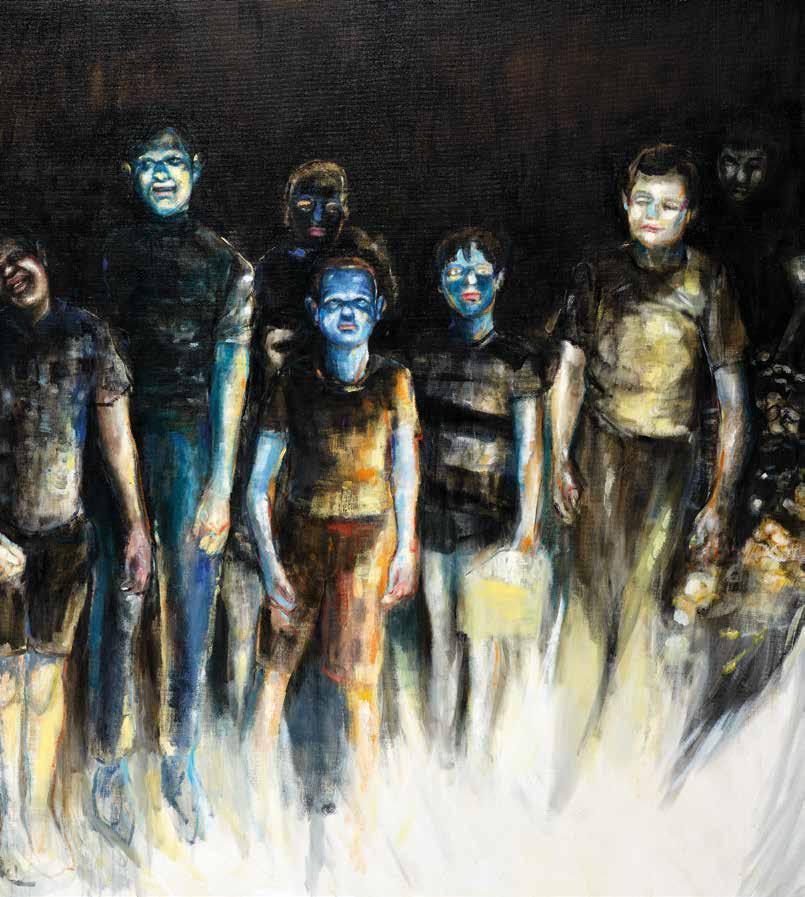
‘The people that crowd Pick’s broadly brushed new canvasses are almost frightening in their intensity. There is something uncomfortably primal about all that unexplained feeling: these faces remind us how little it takes to revert to the impulses of superstition and violence.’1
Leonardo da Vinci’s reputedly original painting ‘Salvator Mundi’ was sold by Christie’s in New York in 2017 and holds the record for the most expensive painting ever sold at auction. During the international marketing program before the auction, Christie’s produced a 4:14 minute video ‘The Last da Vinci: The World is Watching’ in which viewers of the painting react passionately to what they see from the confines of a darkened room. But…the da Vinci itself, the ultimate subject of the campaign that achieved that 450-million-dollar record, is never shown. It remains unseen. Christie’s leave us to see only the emoted faces of people viewing the painting.
This is a powerful ploy that is very common in cinema. Hitchcock and other masters of the horror genre are often loathed to show us the explicit horror of their ways, but rather direct long takes of an actor’s face, shocked and frightened, reacting instinctively to what they are seeing. In cinema, this is how to truly populate fear in an audience.
At the time of ‘Devil’s Music’, 2009, which was shown in her Christchurch survey show in November of that year, Séraphine Pick was producing figurative paintings often surreal in impulse and cinematic in scale. Figurative painting, yes, because the earlier pre-millennial works were bleached-out mindscapes with thought bubbles. But now there is flesh on the bone to her figures as if Hieronymus Bosch had intervened and sent her off to make fearsome graduates of his style from distant corners of the internet.
In this painting, the romanticism of family camping trips and roasting marshmallows over an open fire is upended as the tone is more sinister. Nine figures gather, perhaps more. That’s a complex lot for portraiture. The painting is dark and true to the tactics of Hitchcock, the campfire of fear rages mostly off screen, but it throws an unrelenting light at the gathering of young participants. It has a bleaching effect like the limelight set at the front of the stage in early 20th century music halls where the actors could move between bawdy parody and distilled fear in seconds with a facial switch from mockery to grimace.
Here, Pick’s characters are timeless. They are humbly dressed without costuming, so could just as easily be Bosch protagonists as Gen Z, or even a sinister fireside grouping from William Golding’s ‘Lord of the Flies’. Hands fall painted loosely to the sides and offer no clue through gesture. But here, facial expression is everything. The grimacing and clown-like adornments are immediately frightening. Human curiosity is on trial as the viewer strains into the canvas to try and learn more and settle once and for all what the painting is about.
Pick’s characters gaze out at the viewer, yet these characters hold back from telling all. Are they witnessing a medieval sacrifice? Are they striking out from a place of human vulnerability as William Golding’s young men did, to question savagery and power? Are they questioning, as Milburn suggests, a spirit of malevolence that can hide in individuals but rise up in a group playing the ‘Devil’s Music’ in refrain?
Peter James Smith
Shane Cotton Sun Portrait
acrylic on canvas signed and dated 2019
1200 x 1000mm
Provenance
Private collection, Central North Island. Exhibited
‘Sun Portrait’, Michael Lett, Auckland, 13 November – 14 December 2019.
$45 000 – $65 000

Shane Cotton Dog, Ball, Diamond oil on panel signed with artist’s initials S.W.C 758 x 1988mm
Provenance
Purchased from FHE Galleries, Auckland, 1997.
$65 000 – $85 000
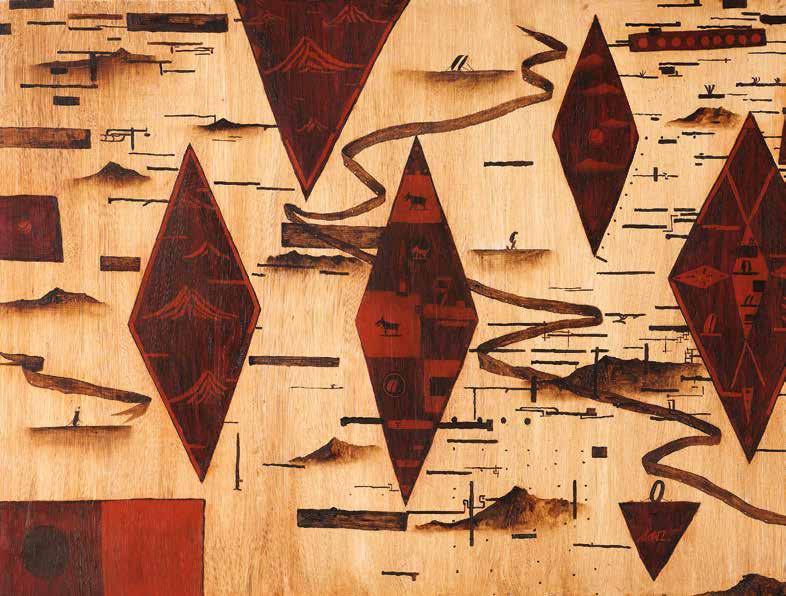

Ralph Hotere
Aramoana, Koputai
acrylic on canvas panels mounted on wooden frames set inside two panel folding screen . signed and dated ’79 and variously inscribed 1545 x 607mm
1545 x 900 x 550mm: installation size variable
Provenance
Purchased from Judith Anderson Gallery, Auckland, 1994.
Exhibited
‘Hotere: Out the black window’, City Gallery, Wellington, June 1997.
Illustrated
Gregory O’Brien, Hotere: Out the Black Window – Ralph Hotere’s work with New Zealand Poets (Godwit, 1997), p. 44.
$80 000 – $120 000
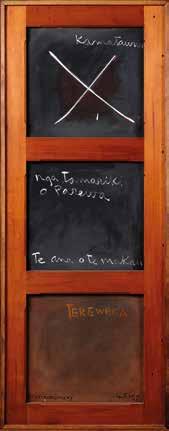
The format of the double-sided, hinged, free-standing, painted wooden screen has appealed to many New Zealand artists, including Colin McCahon, Gordon Walters, Pat Hanly, Ralph Hotere, Bill Hammond and others. Ron Sang’s Hotere (2008), reproduces five screens, including the present work, while a sixth, The Wind I & II is included in Gregory O’Brien’s Hotere: Out the Black Window (1997); there may well be others among Hotere’s enormous output. Of the six known screens, three date from 1976, one from 1979 (Aramoana, Koputai), and two from 1987–88).
While the last two works are painted on stainless steel, the other four have a similar construction and format: the front consists of a double image on canvas, while the back consists of six canvas squares (three to each panel) within wide wooden frames. In Aramoana/Koputai the images and writing on the back are confined to the canvas squares, whereas in the three 1976 screens words are stencilled onto the wooden surrounds. Aramoana/Koputai is thus unique in the way the screen format is utilised.
Aramoana/Koputai was included in the exhibition Hotere: Out the Black Window at City Gallery, Wellington in 1997. In the accompanying book, Gregory O’Brien explains the title: ‘Aramoana’ (meaning ‘pathway to the sea’) is of course the sand-dune spit at the mouth of Otago Harbour, which figures recurrently in Hotere’s work of the 1970s and 80s as the site of a projected aluminium smelter, against the construction of which he and thousands of others successfully protested. The abstract image spreading across the front may be construed as an implicit outcry at such environmental desecration. O’Brien explains the significance of ‘Koputai’ (meaning ‘high tide’) as follows: ‘A traditional Māori tale has it that a group of Māori went to sleep on the beach at Port Chalmers and awoke to find their canoes had drifted away on the tide, at which they exclaimed “Koputai!”’ (O’Brien, p. 83).
The double title replicating the format of the hinged and double-sided screen, evokes the whole cherished environment of Otago harbour from Port Chalmers (where Hotere lived and had his studio) to the open ocean at Aramoana, and this emphasis on place and name is repeated on the back as four of the six panels include Māori place names (written in varying scripts and colours) for the hills, islands and other locations on and around the harbour: Mihiwaka, Mopanui, Rangiriri, Kamamautarua, Nga Tamariki O Parewa, Te Ara O Te Makau and Tereweka. It is a rollcall, a litany of names, to evoke personal and tribal attachment to the region as threatened by industrial capitalism.
The single back-panel in English quotes from Ezekiel 36: 28 in the Old Testament: ‘And ye shall dwell in the land I gave to your fathers and ye shall be my people and I will be your God’. As O’Brien remarks such biblical prophecies ‘carry strong associations with Māori millenarian movements – they are important statements of the relationship between the land and its inhabitants’ (p. 45)
This majestic work, so rich and varied in its imagery and connotations, comes from the living core of Hotere’s artistic being and heritage.
Peter Simpson
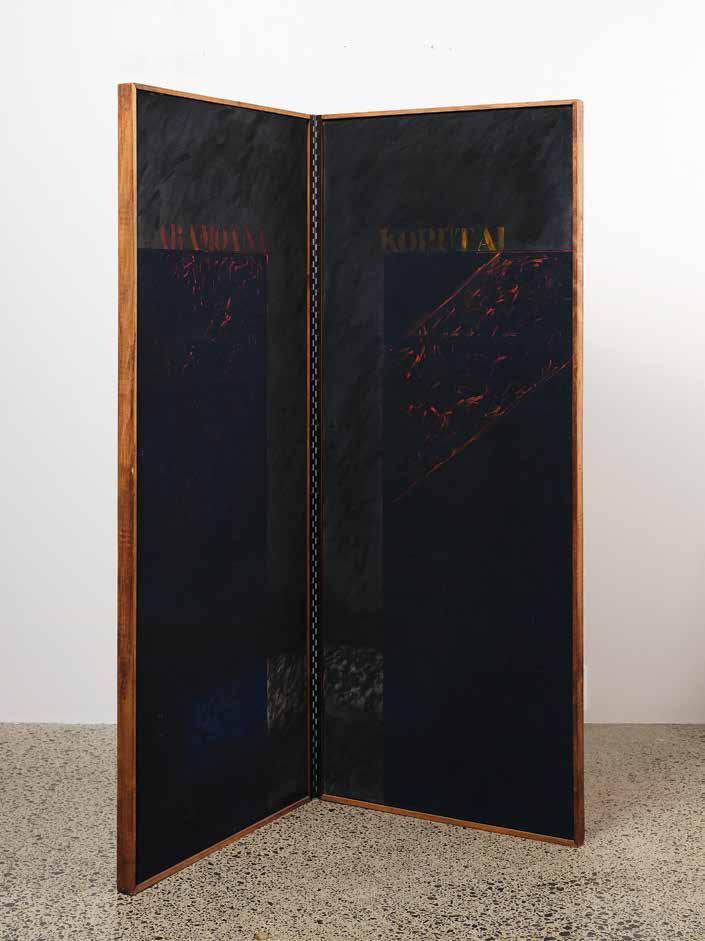
Colin McCahon
Fly Out from Muriwai – it takes some looking at conté crayon on paper title inscribed, signed and dated ‘Easter ‘73’ 210 x 280mm
Provenance
Private collection, Auckland.
Reference
Colin McCahon Database (mccahon.co.nz) cm001123.
$25 000 – $35 000

Colin McCahon
North Otago
synthetic polymer paint on paper signed and dated ’67 and inscribed for June from Colin 690 x 435mm
Provenance
From the estate of Auckland
$65 000 – $85 000

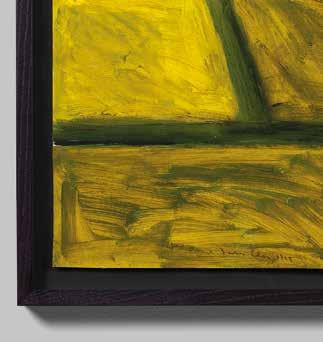

Tony Fomison
Closing time at the zoo
oil on jute canvas laid onto board title inscribed, signed and dated '81 and inscribed started 14.4.81 verso 207 x 283mm
Provenance
Collection of P. Fraser, Wellington. Private collection, Auckland.
Reference
Ian Wedde (ed), Fomison: What shall we tell them? (City Gallery, Wellington, 1994), Supplementary Cat. No. 71
$50 000 – $70 000

Rita Angus Kaikoura
watercolour signed and dated ’56; original National Art Gallery, Rita Angus Loan Collection label affixed verso 370 x 557mm
Provenance
Private collection, Auckland.
$65 000 – $85 000
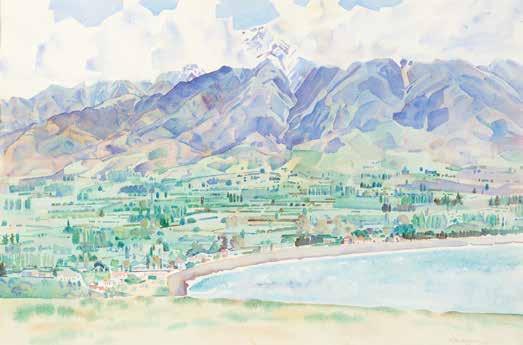
Judy Millar
Untitled
acrylic on canvas
signed and dated 2002 verso 2250 x 2000mm
Provenance
Private collection, Auckland.
$25 000 – $35 000
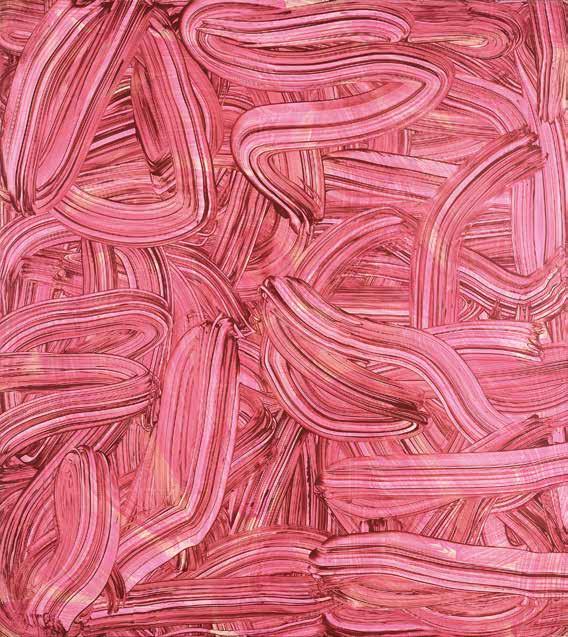
Judy
Millar
Untitled
oil and acrylic on canvas signed and dated 2023 verso 2300 x 850mm
Provenance
Private collection, Wellington.
$25 000 – $35 000
Judy Millar
Tonight the Stars’ll be out oil and acrylic on canvas title inscribed, signed and dated 2015 verso 1400 x 950mm
Provenance
Private collection, Auckland. $15 000 – $22 000
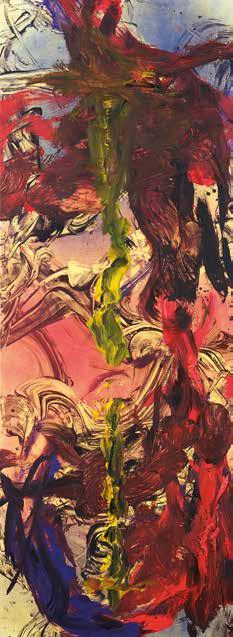

Milan Mrkusich
Progression V Red 1991
alkyd on Belgian linen title inscribed, signed and dated ’91 verso 610 x 1675mm
Provenance
Private collection, Auckland. Purchased from Sue Crockford Gallery, November 1991. Private collection, Auckland. Purchased from Webb’s, Auckland 8 April 1997, Lot No. 761.
$35 000 – $55 000
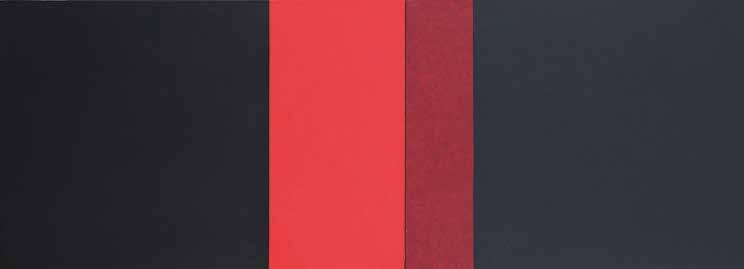
Philip Clairmont
Small Wardrobe with Coat Hanger and Nude
oil on board
title inscribed verso; original Ferner Galleries label affixed verso
400 x 300mm
Provenance
Private collection, Auckland.
$16 000 – $25 000

55 Fiona Pardington
Portrait of a life cast of Matoua Tawai (right profile), Aotearoa, New Zealand, from the series Ahua: a beautiful hesitation inkjet print on Hahnemuhle paper, edition of 10, 2010 1450 x 1110mm
Provenance
Private collection, Auckland.
$20 000 – $30 000

56 Fiona Pardington
Still Life with Albatross Tail, Elizabeth’s Whalebone
Needles and Shotgun Casings, Ripro, 2014
inkjet print on Hahnemuhle paper, edition of 10 1760 x 1400mm
Provenance
Private collection, Auckland.
$18 000 – $28 000

Jeffrey Harris
Pieta
oil on board
title inscribed, signed and dated 2003 verso 358 x 545mm
Provenance
Private collection, Auckland. Purchased from Milford Galleries, Queenstown, 2004.
$28 000 – $38 000
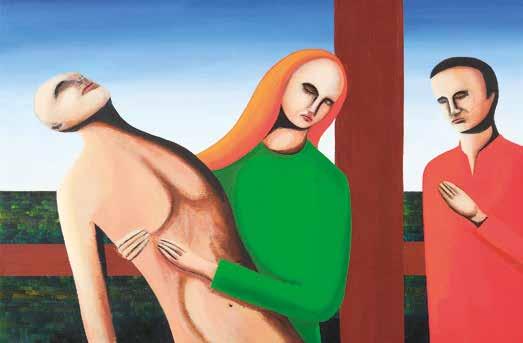
Toss Woollaston Brownacre
oil on canvas
signed and dated 1993
753 x 1052mm
Provenance
Private collection, Hamilton.
$35 000 – $55 000
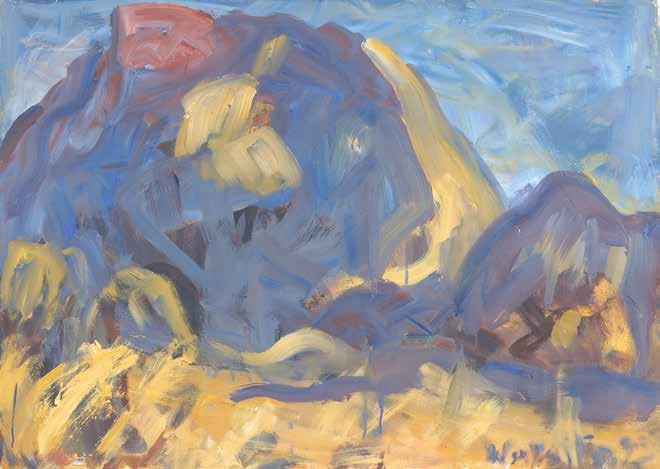
59
Shane Cotton Traditional Handles and Switches
acrylic on canvas title inscribed, signed and dated 2012
verso
1800 x 1600mm
Provenance
Private collection, Auckland.
$60 000 – $80 000
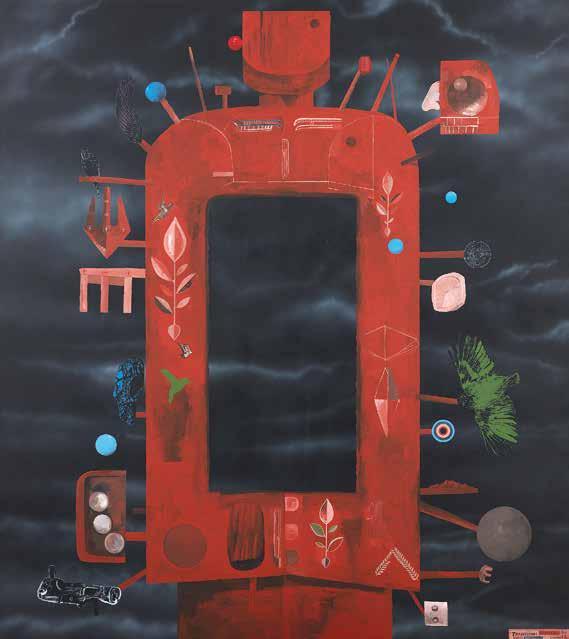
Max Gimblett Kimono
synthetic polymer paint on five adjoined canvas panels title inscribed, signed and dated 1991 verso
1150 x 1150 x 90mm
Provenance
Private collection, Wellington.
$45 000 – $65 000
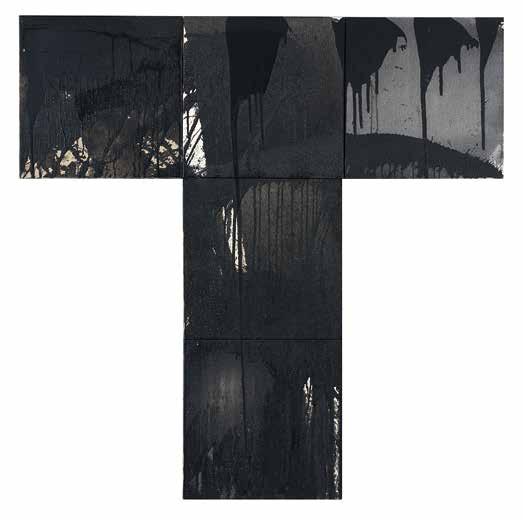
Michael Smither Woman in a Blue Chair oil on board
original Auckland City Art Gallery ‘Anxious Images’ exhibition label affixed verso signed with artist’s initials MDS and dated ‘72
1225 x 890mm
Exhibited
‘Anxious Images: Aspects of Recent New Zealand Art’, Auckland City Art Gallery, 1994. Provenance
Private collection, Auckland.
$65 000 – $85 000

62
George Tjungurrayi
acrylic on linen canvas inscribed with artist's name, date (2006) and Muk Muk Aboriginal Art Catalogue No. 9663 FW9877 verso 1405 x 1907mm
Provenance
Private collection, Auckland. Purchased from Fireworks Gallery, Brisbane, 2015.
$6000 – $9000
63 Grace Wright Fate Undecided Yet Wouldn’t You Like to Know
oil on linen
title inscribed, signed and dated 2019 verso 1800 x 1300mm
$18 000 – $ 28 000
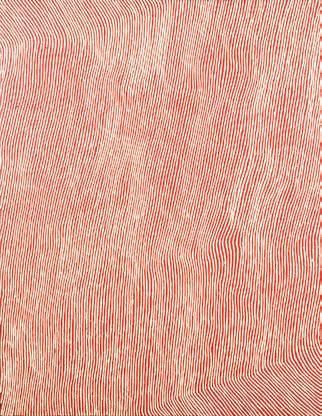
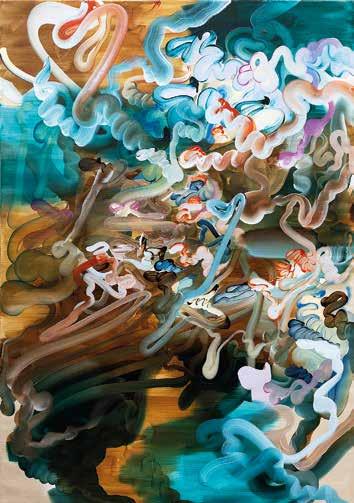
Elizabeth Thomson Moth
cast bronze
signed and dated 1999 verso
100 x 100 x 35m
Provenance
Private collection, Sydney, Australia.
$1000 – $2000
65
Denis O’Connor Saltmurmur Syrah
slate title inscribed, signed and dated 1998 verso
760 x 458 x 15mm
Provenance
Private collection, Auckland. Purchased from ‘Art in the Vineyard’ Waiheke Island, 2001.
$6000 – $9000

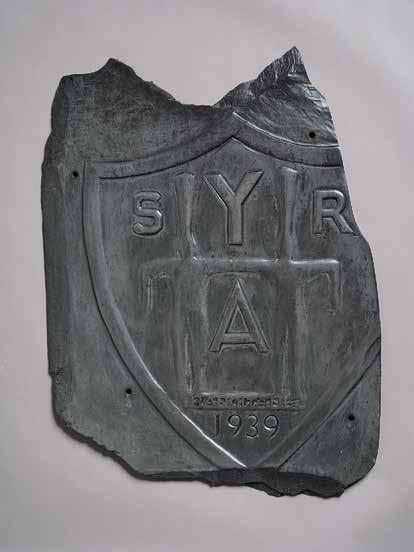
Terry Stringer
Table Setting
aluminium and oil paint signed and dated ‘84 1240 x 1420 x 150mm
Illustrated
Laurence Simmons, ‘Tables/Tableaux: Some Recent Work by Terry Stringer’, Art New Zealand, No. 32, p. 39.
$20 000 – $30 000

Tony Fomison
Blue Self Portrait
oil on canvas laid onto board
title inscribed, signed and dated March 1977 and inscribed Cat No. 174 verso; original Suter Gallery exhibition, Jens Hansen collection and ‘Fomison: a survey’; exhibition labels affixed verso 224 x 332mm
Reference
Ian Wedde (ed), Fomison: What shall we tell them? (City Gallery, Wellington, 1994), Supplementary Cat. No. 59.
Exhibited
‘Tony Fomison: a survey of his painting and drawing from 1961 to 1979’, October 14 – November 18, 1979. ‘The Self: An Exhibition of Self-Portraits’, City Gallery, Wellington, September 18 – October 22, 1986.
Provenance
Collection of the jeweller, Jens Hoyer Hansen (1940–1999), Nelson. Purchased from Elva Bett Gallery, Wellington, circa 1980. Thence by descent.
Private collection, Auckland
$75 000 – $95 000
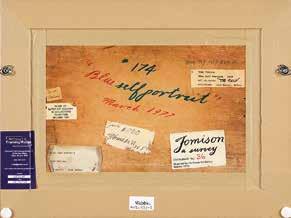

Bill Hammond And I’m Always Worried
acrylic and metallic pigment on canvas title inscribed, signed and dated 1985 and inscribed “Totally Wired”, The Fall
760 x 510mm
Provenance
Private collection, Auckland.
$30 000 – $40 000
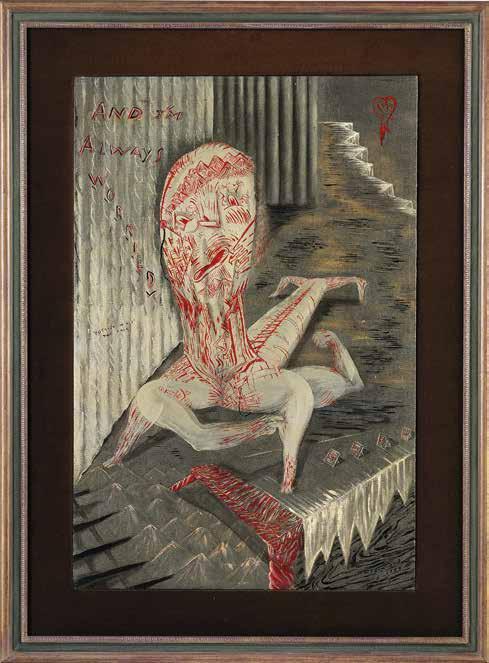
Julian Dashper
Untitled (Lucky Guy No. I)
digital print on photorag paper, 1/5 title inscribed, signed and dated 2008 verso; original Kaliman Gallery, Sydney label affixed verso 232 x 232mm
Provenance
Private collection, Sydney, Australia.
$2500 – $4000
70 Julian Dashper
Untitled
oil and acrylic on paper, circa 1984 215 x 295mm
Provenance
Private collection, Sydney, Australia.
$1500 – $2500
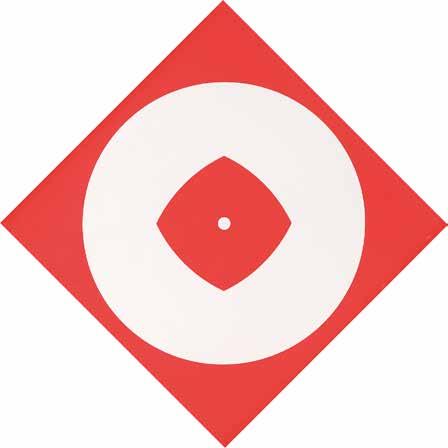

Milan Mrkusich
Grey – Meta Grey
acrylic on canvas title inscribed, signed and dated 1970 verso 920 x 890mm
Provenance
Private collection, Auckland.
$30 000 – $45 000

Stephen Bambury
Thanks, Again (III)
acrylic and graphite on aluminium panel title inscribed, signed and dated 1994 verso
400 x 400mm
Provenance
Private collection, Auckland.
$7500 – $10 000
73 Jude Rae Still Life No. 5
oil on canvas title inscribed, signed and dated ’98 verso
660 x 710mm
Provenance
Private collection, Auckland.
$20 000 – $30 000

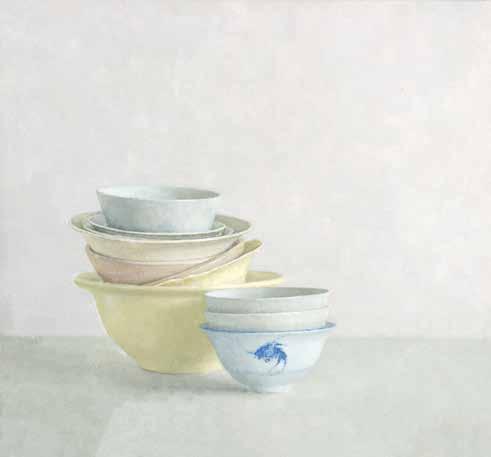
Ralph Hotere Winter Solstice
oilpastel on paper and card title inscribed, signed and dated July ’91 and inscribed Carey’s Bay 475 x 325mm
Provenance
Private collection, Dunedin.
$12 000 – $16 000
75
Shane Cotton Kūpapa
oil on canvas
signed with artist’s initials S.W.C and dated ’97 280 x 355mm
Provenance
Private collection, Auckland.
$10 000 – $15 000
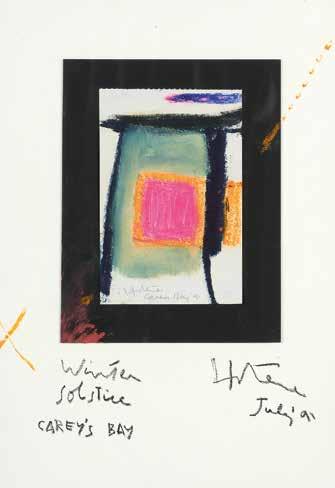
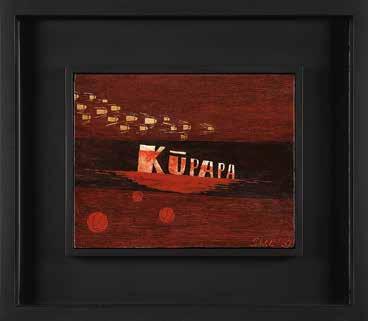
Phil Price
New Angel
carbon fibre and epoxy, precision bearings and stainless steel (2022) 2300mm: height
Provenance
Private collection, Canterbury.
$45 000 – $65 000
77
Phil Price
Ovoid
carbon fibre, precision bearings and stainless steel (2012) 1200 x 300 x 350mm
Provenance
Private collection, Canterbury.
$22 000 – $32 000
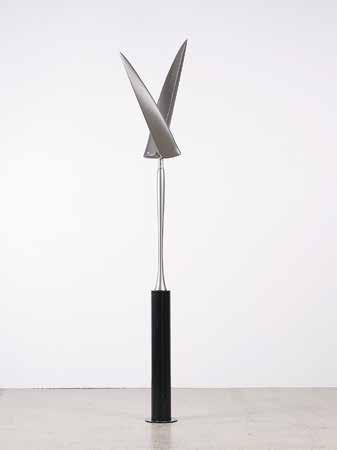

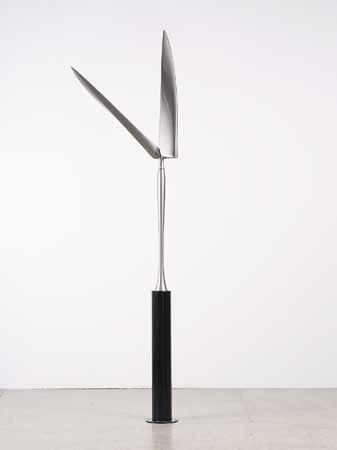
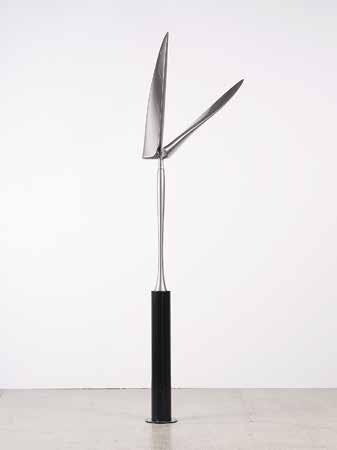


Pauline and James Yearbury Tawhirimatea
acrylic on incised wood panel signed with artist’s monogram JPY; title inscribed on original labels and inscribed ‘Tawhirimatea’ was god of the winds. After the separation of his parents Rangi, the Sky Father and Papa-tu-a-nuku the Earth Mother, he followed his his father and declared war on land and sea and was victorious. verso
610 x 310 x 30mm
$5000 – $8000
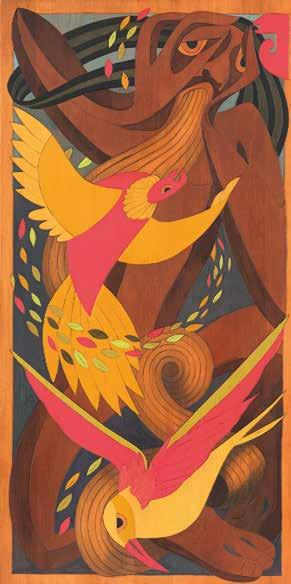
Pauline and James Yearbury Tawhirimatea
acrylic on incised wood panel signed with artist’s monogram JPY; title inscribed and signed on original labels affixed verso
610 x 310 x 30mm
$5000 – $8000
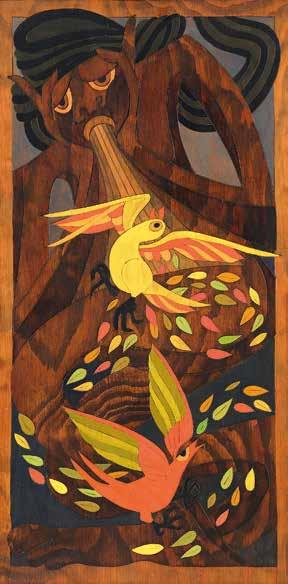
L. Budd
What has been, what can be perceived, again and again, and only here, only now
pastel on paper, diptych inscribed [Budd in conversation with Celan, Berlin 1970]
570 x 840mm
Provenance
Private collection, Auckland.
$5000 – $8000

81
Richard Killeen
Stack: Months and Days
acrylic and collage on five canvas panels
title inscribed, signed and dated November 9 1989
380 x 580mm: each
380 x 2900mm: overall
Provenance
Private collection, Auckland.
$13 000 – $20 000

82
Humphrey Ikin
Untitled
timber and steel (circa 2006)
2500 x 130 x 130mm
Provenance
Private collection, Auckland.
$4000 – $7000
83
Seung Yul Oh Pou Sto Moon
3D printed resin and epoxy paint
315 x 295 x 295mm
Provenance
Private collection, Auckland.
$15 000 – $22 000
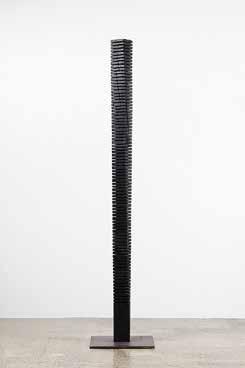
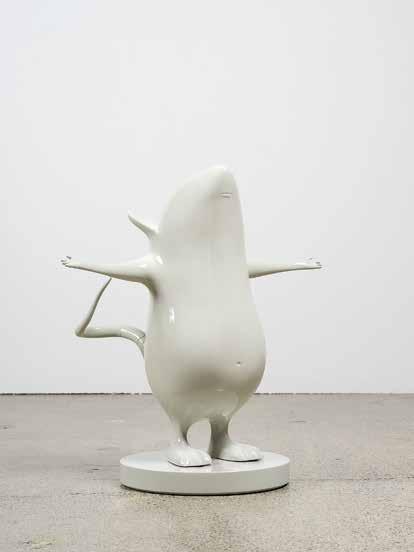
Dick Frizzell
White Building
oil on canvas
title inscribed, signed and dated ’89 710 x 890mm
Provenance
Private collection, Auckland.
$10 000 – $16 000
85
Nigel Brown
Strictly for the Birds
oil and acrylic on canvas
title inscribed, signed and dated 2009 and inscribed (For Jacqueline Fahey) verso
750 x 500mm
Provenance
Private collection, Auckland.
$6500 – $10 000
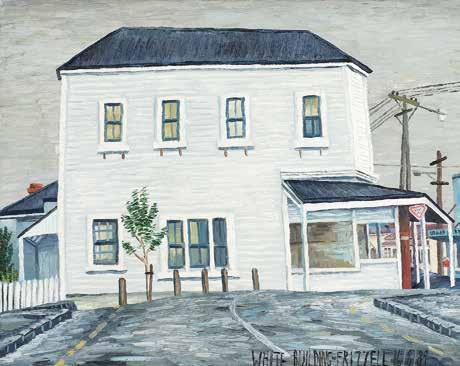
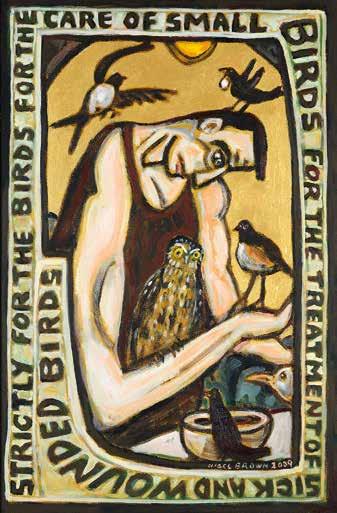
Chris Corson-Scott Kotanui Island and Rangitoto (after John Kinder)
archival pigment print, 1/7 (2013) 1100 x 1350mm
Illustrated
Chris Corson-Scott, The Afterglow of Industry: New Zealand Photographs 2012–2022 (Auckland, 2025).
Exhibited
'Taimoana | Coastlines: Art in Aotearoa', Auckland Art Gallery Toi o Tāmaki, 20 April 2024 –30 May 2027.
$5500 – $8500

Colin McCahon
Tomorrow will be the same but not as this is
screenprint with archival ink on BFK Reives Italian 300gsm art paper, McCahon House Centenary Edition 95/100 signed on the original plate 1200 x 800mm
$10 000 – $15 000
88
Rita Angus Portrait of a Māori Girl
watercolour signed 297 x 236mm
Provenance
Private collection, Auckland. $12 000 – $18 000


PLEASE NOTE: it is assumed that all bidders at auction have read and agreed to the conditions described on this page. Art+Object directors are available during the auction viewing to clarify any questions you may have.
1. REGISTRATION: Only registered bidders may bid at auction. You are required to complete a bidding card or absentee bidding form prior to the auction giving your correct name, address and telephone contact and supplementary information such as email addresses that you may wish to supply to Art+Object.
2. BIDDING: The highest bidder will be the purchaser subject to the auctioneer accepting the winning bid and any vendor’s reserve having been reached. The auctioneer has the right to refuse any bid. If this takes place or in the event of a dispute the auctioneer may call for bids at the previous lowest bid and proceed from this point. Bids advance at sums decreed by the auctioneer unless signaled otherwise by the auctioneer. No bids may be retracted. The auctioneer retains the right to bid on behalf of the vendor up to the reserve figure.
3. RESERVE: Lots are offered and sold subject to the vendor’s reserve price being met.
4. Lots offered and sold as described and viewed: Art+Object makes all attempts to accurately describe and catalogue lots offered for sale. Notwithstanding this neither the vendor nor Art+Object accepts any liability for errors of description or faults and imperfections whether described in writing or verbally. This applies to questions of authenticity and quality of the item. Buyers are deemed to have inspected the item thoroughly and proceed on their own judgment. The act of bidding is agreed by the buyer to be an indication that they are satisfied on all counts regarding condition and authenticity.
5. BUYERS PREMIUM: The purchaser by bidding acknowledges their acceptance of a buyers premium of 19% + GST to be added to the hammer price in the event of a successful sale at auction.
6. ART+OBJECT IS AN AGENT FOR A VENDOR: A+O has the right to conduct the sale of an item on behalf of a vendor. This may include withdrawing an item from sale for any reason.
7. PAYMENT: Successful bidders are required to make full payment immediately post sale – being either the day of the sale or the following day. If for any reason payment is delayed then a 20% deposit is required immediately and the balance to 100% required within 3 working days of the sale date. We accept payment
via Eftpos, cash (under $5000.00) and direct credit. Visa and MasterCard credit cards are accepted, however a surcharge of 2.5% will be added. Payments over $10,000.00 must be made by direct credit to our bank account. Our bank details for deposits are 12–3107–0062934–00. Please use your buyer number as transaction reference. Please refer to point 7 of the Conditions of Sale in the catalogue for a detailed description of payment terms.
8. FAILURE TO MAKE PAYMENT: If a purchaser fails to make payment as outlined in point 7 above Art+Object may without any advice to the purchaser exercise its right to: a) rescind or stop the sale, b) re offer the lot for sale to an underbidder or at auction. Art+Object reserves the right to pursue the purchaser for any difference in sale proceeds if this course of action is chosen, c) to pursue legal remedy for breach of contract.
9. COLLECTION OF GOODS: Purchased items are to be removed from Art+Object premises immediately after payment or clearance of cheques. Absentee bidders must make provision for the uplifting of purchased items (see instructions on the facing page).
10. BIDDERS OBLIGATIONS: The act of bidding means all bidders acknowledge that they are personally responsible for payment if they are the successful bidder. This includes all registered absentee or telephone bidders. Bidders acting as an agent for a third party must obtain written authority from Art+Object and provide written instructions from any represented party and their express commitment to pay all funds relating to a successful bid by their nominated agent.
11. BIDS UNDER RESERVE & HIGHEST
SUBJECT BIDS: When the highest bid is below the vendor’s reserve this work may be announced by the auctioneer as sold ‘subject to vendor’s authority’ or some similar phrase. The effect of this announcement is to signify that the highest bidder will be the purchaser at the bid price if the vendor accepts this price. If this highest bid is accepted then the purchaser has entered a contract to purchase the item at the bid price plus any relevant buyers premium.
The following information does not form part of the conditions of sale, however buyers, particularly first time bidders are recommended to read these notes.
A. Bidding at auction: Please ensure your instructions to the auctioneer are clear and easily understood. It is well to understand that during a busy sale with multiple bidders the auctioneer may not be able to see all bids at all times. It is recommended that you raise your bidding number clearly and without hesitation. If your bid is made in error or you have misunderstood the bidding level please advise the auctioneer immediately of your error – prior to the hammer falling. Please note that if you have made a bid and the hammer has fallen and you are the highest bidder you have entered a binding contract to purchase an item at the bid price. New bidders in particular are advised to make themselves known to the sale auctioneer who will assist you with any questions about the conduct of the auction.
B. ABSENTEE BIDDING: Art+Object welcomes absentee bids once the necessary authority has been completed and lodged with Art+Object. A+O will do all it can to ensure bids are lodged on your behalf but accepts no liability for failure to carry out these bids. See the Absentee bidding form in this catalogue for information on lodging absentee bids. These are accepted up to 2 hours prior to the published auction commencement.
C. TELEPHONE BIDS: The same conditions apply to telephone bids. It is highly preferable to bid over a landline as the vagaries of cellphone connections may result in disappointment. You will be telephoned prior to your indicated lot arising in the catalogue order. If the phone is engaged or connection impossible the sale will proceed without your bidding. At times during an auction the bidding can be frenetic so you need to be sure you give clear instructions to the person executing your bids. The auctioneer will endeavour to cater to the requirements of phone bidders but cannot wait for a phone bid so your prompt participation is requested.
D. NEW ZEALAND DOLLARS: All estimates in this catalogue are in New Zealand dollars. The amount to be paid by successful bidders on the payment date is the New Zealand dollar amount stated on the purchaser invoice. Exchange rate variations are at the risk of the purchaser.
Auction No. 211
Important Paintings and Contemporary Art 27 November 2025 at 6.00pm
Art+Object will advise me as soon as is practical that I am the successful bidder of the lot or lots described above.
This completed and signed form authorises Art+Object to bid on my behalf at the above mentioned auction for the following lots up to prices indicated below. These bids are to be executed at the lowest price levels possible.
I understand that if successful I will purchase the lot or lots at or below the prices listed on this form and the listed buyers premium for this sale (19%) and GST on the buyers premium. I warrant also that I have read and understood and agree to comply with the conditions of sale as printed in the catalogue.
Bid maximum in New Zealand dollars (for absentee bids only)
Please indicate as appropriate by ticking the
Mr/Mrs/Ms:
I agree to pay immediately on receipt of this advice. Payment will be by Eftpos, cash (under $5000.00) or direct credit. I understand that there is a 2.5% surcharge for payment by Visa or MasterCard credit cards. I understand that payments over $10,000.00 must be made by direct credit to Art+Object’s bank account as shown on the invoice.
I will arrange for collection or dispatch of my purchases. If Art+Object is instructed by me to arrange for packing and dispatch of goods I agree to pay any costs incurred by Art+Object. Note: Art+Object requests that these shipping arrangements are made prior to the auction date to ensure prompt delivery processing.
To register for Absentee or Phone Bidding this form must be lodged with Art+Object by 2pm on the day of the published sale time in one of three ways:
1. Email a printed, signed and scanned form to Art+Object: info@artandobject.co.nz
2. Fax a completed form to Art+Object: +64 9 354 4645
3. Post a form to: Art+Object, PO Box 68345 Wellesley Street, Auckland 1141, New Zealand
Amsel, Galia 23
Angus, Rita 49, 88
Austin, Nick 14,15
Bambury, Stephen 27, 72
Binney, Don 9
Brickell, Barry 12
Brown, Nigel 85
Budd, L. 80
Bush, Kushana 13
Clairmont, Philip 41, 54
Corson-Scott, Chris 86
Cotton, Shane 29, 43, 44, 59, 75
Dashper, Julian 69, 70
Dibble, Paul 10, 38
Edgar, John 24, 25
Fomison, Tony 40, 48, 67
Frizzell, Dick 84
Gimblett, Max 60
Goldie, Charles Frederick 37
Hammond, Bill 68
Hanly, Pat 5
Harris, Jeffrey 57
Hotere, Ralph 4, 35, 36, 39, 45, 74
Ikin, Humphrey 82
Innes, Callum 26
Killeen, Richard 81
Lett, Barry 11
MacLeod, Euan 17
Maddox, Allen 28
Maughan, Karl 30, 31
McCahon, Colin 46, 47, 87
Millar, Judy 50, 51, 52
Mrkusich, Milan 53, 71
O’Connor, Denis 65
Oh, Seung Yul 83
Pardington, Fiona 34, 55, 56
Parekōwhai, Michael 32
Pick, Séraphine 42
Price, Phil 76, 77
Rae, Jude 1, 73
Robinson, Ann 18, 19, 20, 21, 22
Siddell, Peter 16
Smither, Michael 61
Stichbury, Peter 33
Stringer, Terry 66
Thomson, Elizabeth 64
Tjungurrayi, George 62
Walters, Gordon 6,7
White, Robin 2, 3, 8
Woollaston, Toss 58
Wright, Grace 63
Yearbury, Pauline and James 78, 79
November 27